06 July 2018
By portermathewsblog
popsugar.com.au
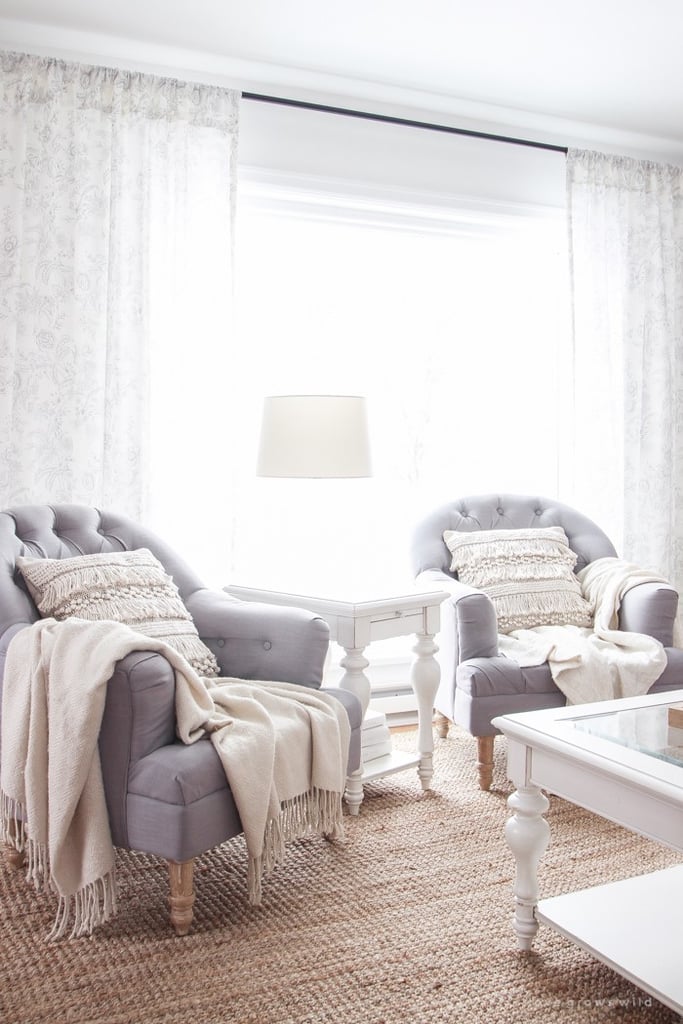
Image Source: A House in the Hills
If there are rules that you as a renter must follow, make it these 10 commandments. Because, while paying your rent on time is important, so too is making sure your place is personalised and stylish. Working within the boundaries of your landlord, it’s little things like a new light fixture that will make an impact without costing a lot of time or money. And, the best part about this entire list is that you’ll leave with your security deposit intact once it’s time to move up and on.
- Thou Shalt Add Storage
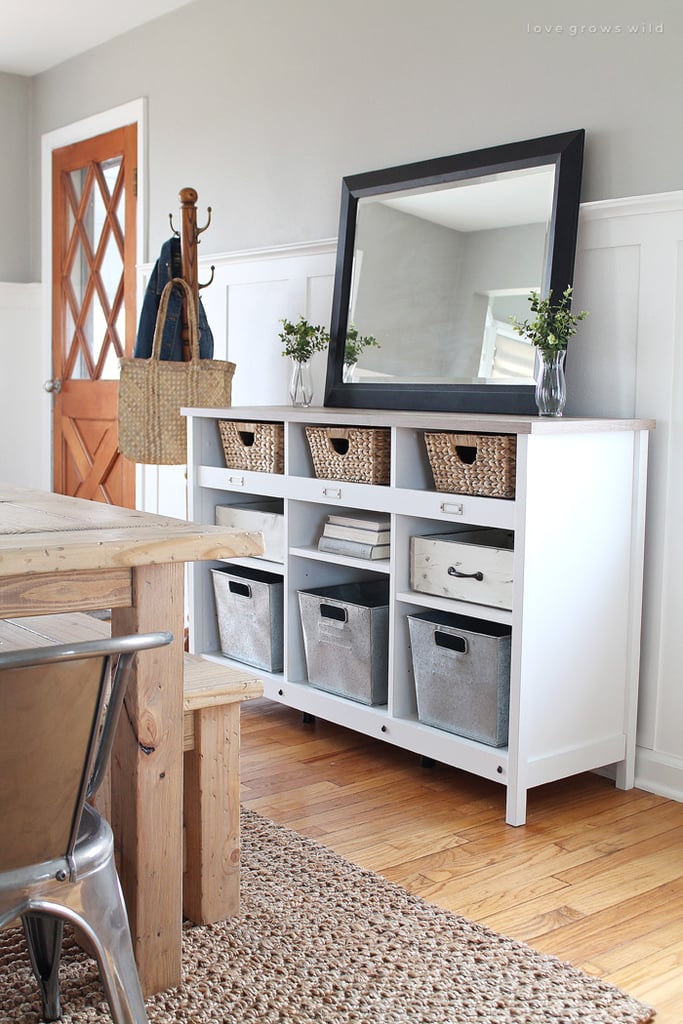
Let’s get real, custom cabinetry is not an option if you don’t own the place. Since rentals usually lack storage, add your own with affordable Ikea bookcases, simple shelves, or these organising solutions.
- Thou Shalt Change the Hardware
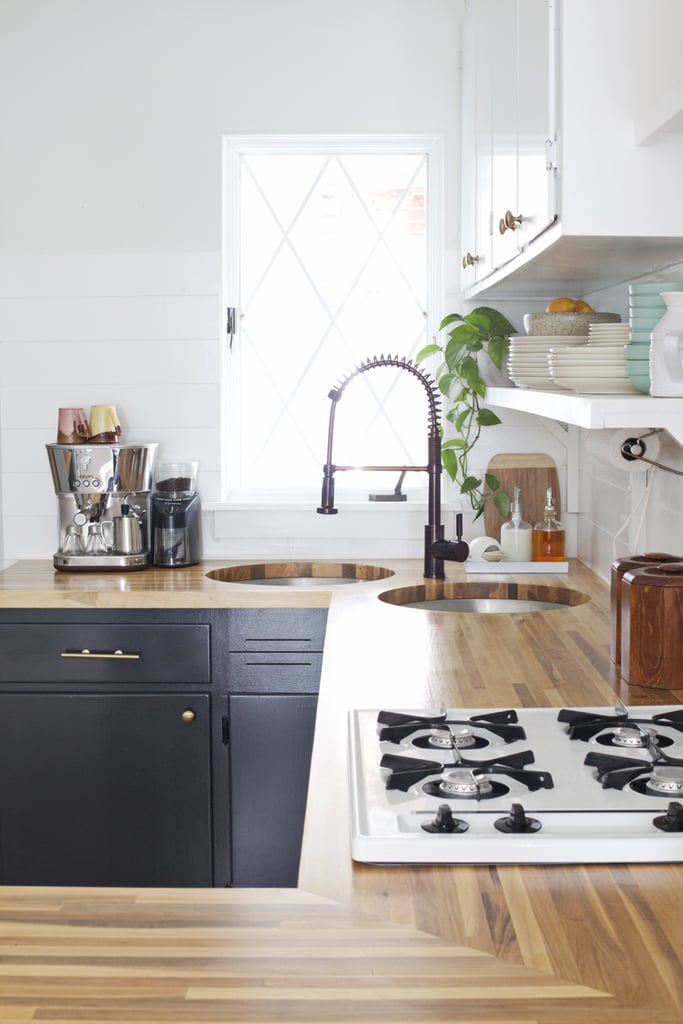
Rental hardware is basic . . . your style, not so much. Switching out cabinet pulls and bathroom hardware will make a huge difference. Just remember to keep the original pieces to swap back in before moving out.
- Thou Shalt Ditch Vertical Blinds
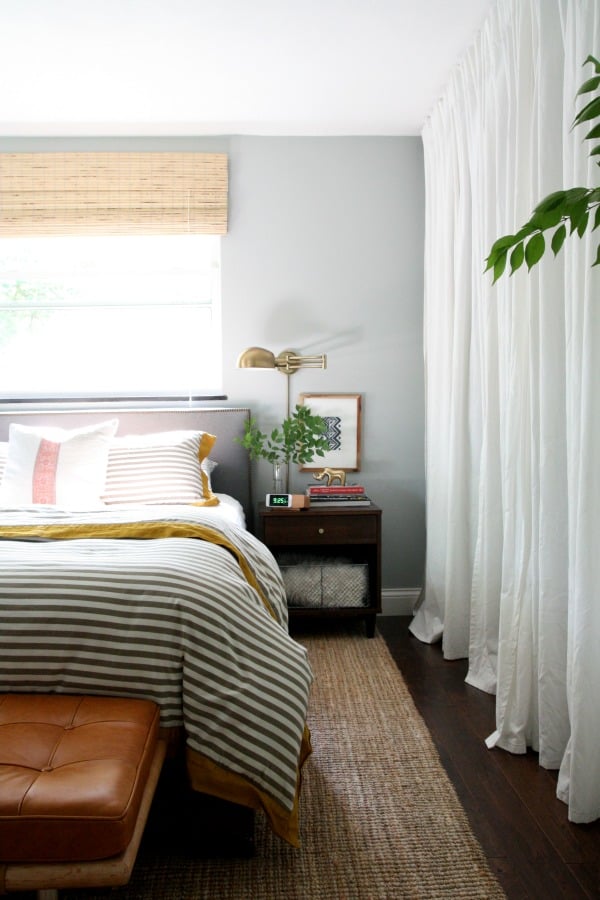
Image Source: Dana Miller for House*Tweaking
They are the ultimate decorating sin! To prevent your space from looking like a hospital room, take them down or hide them under curtains. Again, don’t toss — they’re essential if you want your security deposit back.
- Thou Shalt Line Cabinets
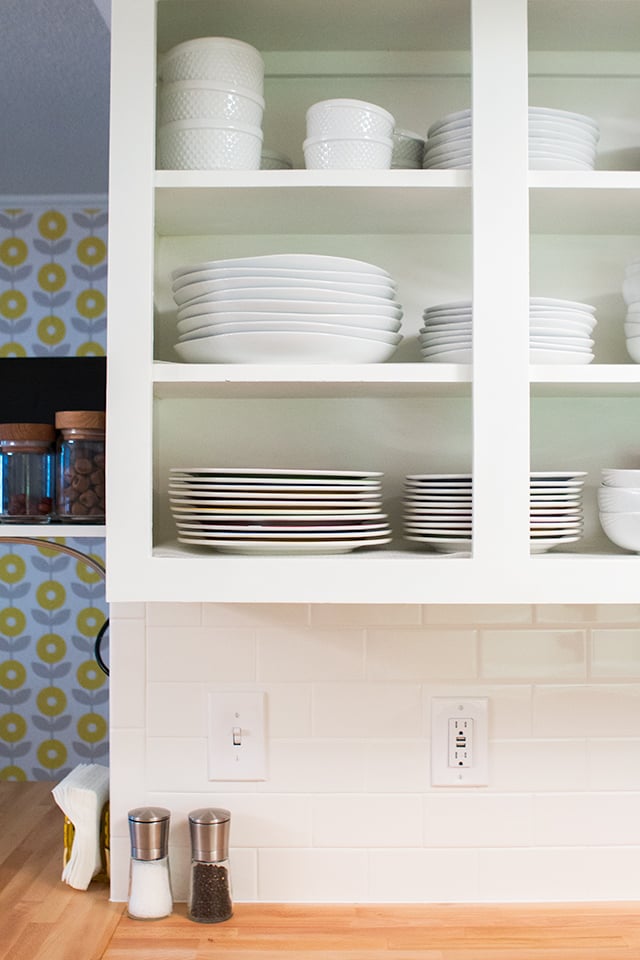
This might seem trivial and a bit annoying, but lining your cabinets is a must. Not only will it make your kitchen look clean, but also it will mask worn and grungy cabinets without having to paint. Adhesive liner works, but a softer grip liner is better because it’s easy to install; it will also prevent glassware from chipping.
- Thou Shalt Accessorise Like Crazy
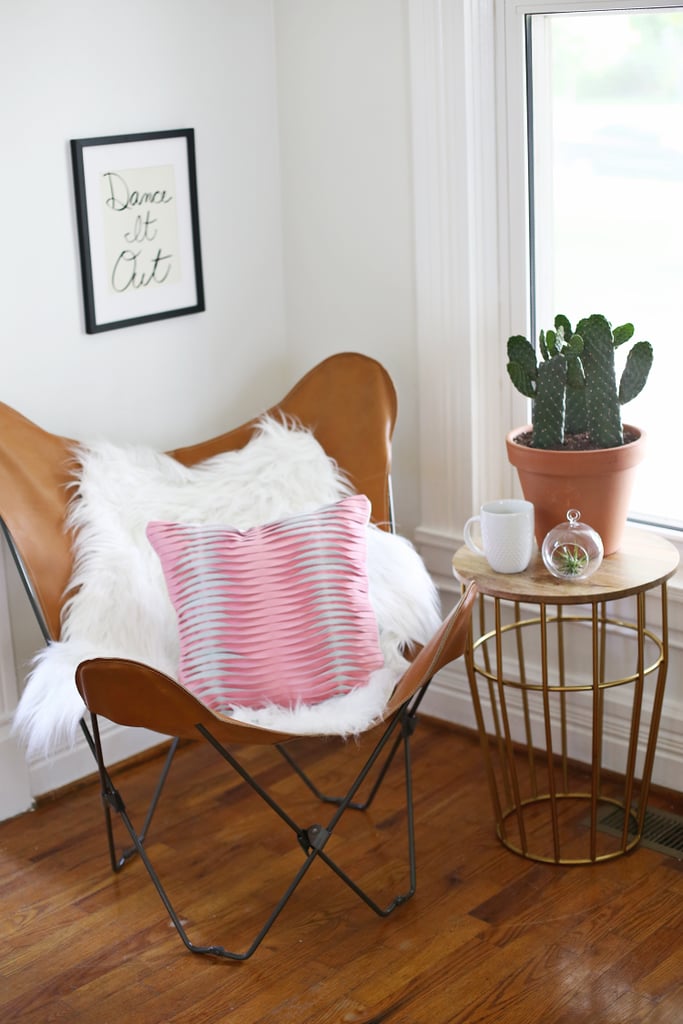
It’s true, and that’s the only way you’re going to get a truly personal space. Go to town with throws, pillows, and accents that reflect your style.
- Thou Shalt Avoid Wallpaper
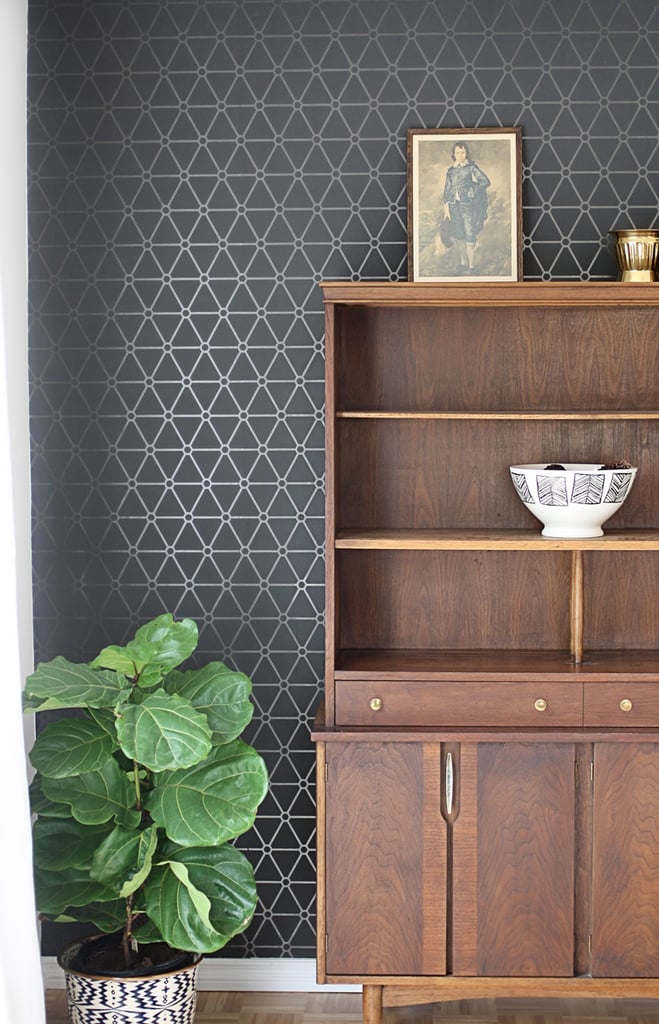
Well, in most cases. Sure it’s stylish, but in all honestly, wallpaper is really inconvenient to remove, especially if you won’t be in your place for long. If you love the patterned look, consider the removable wallpaper seen in this studio or these alternative wallpaper ideas.
- Thou Shalt Hang Art
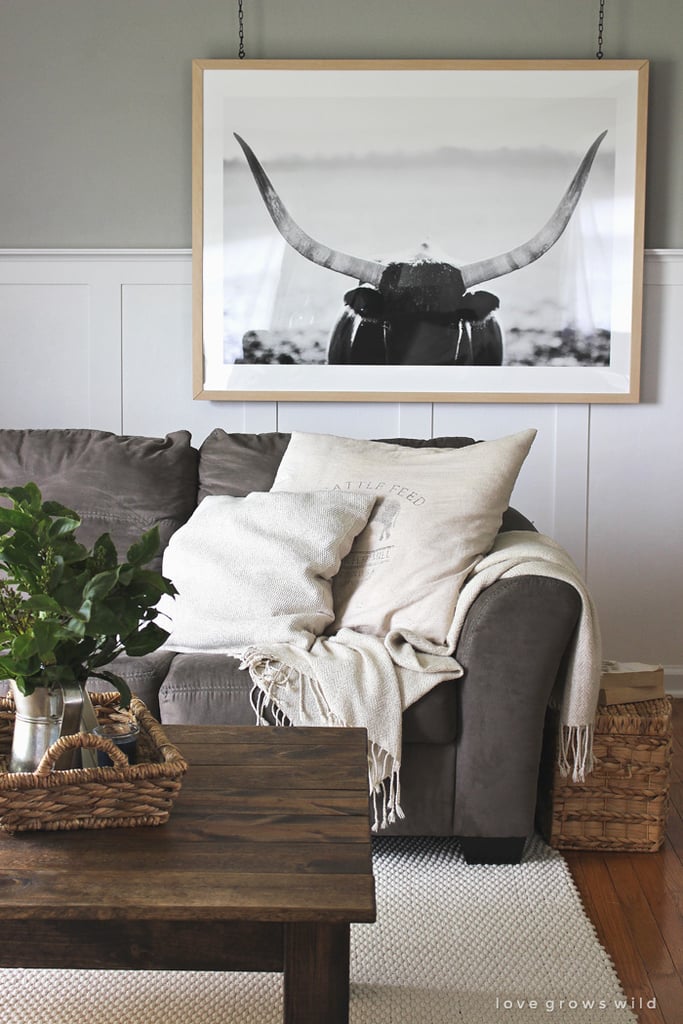
Image Source: Love Grows Wild
No excuses — get your art on the walls! Patching up a tiny hole come move-out day is nothing compared to the impact it will make on your space. No need to create a full-blown gallery wall either. Try hanging one statement piece and resting photos on a mantel or shelf, similar to this home.
- Thou Shalt Invest in Rugs
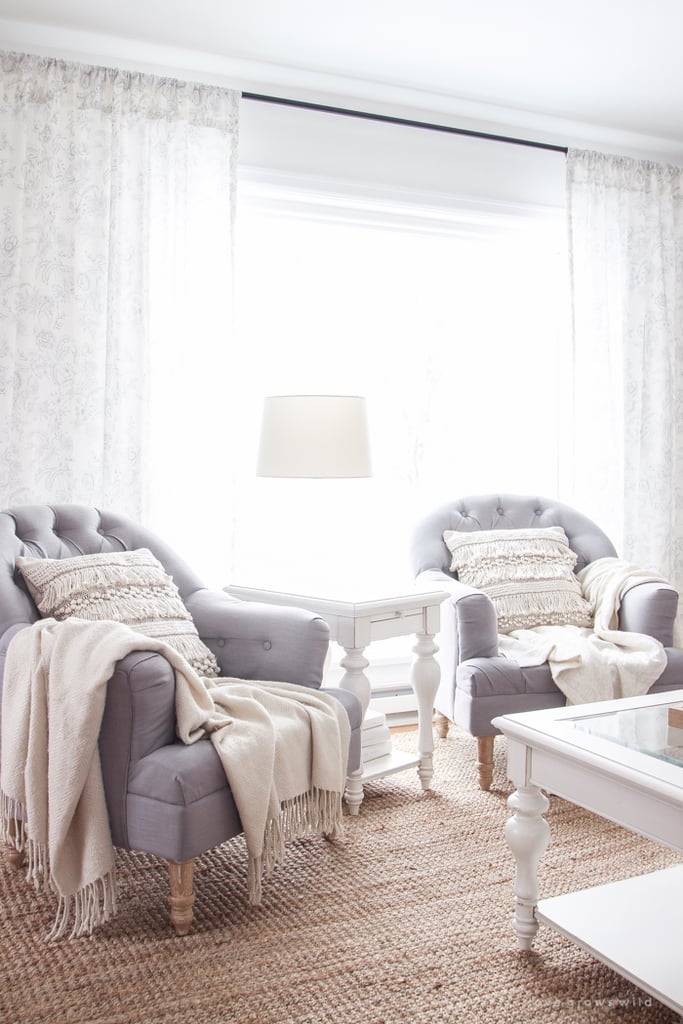
Especially if your place has carpet! Rugs are an easy way to cover up that not-so-cute carpet and can be packed up with you come your next move. Rugs are also a necessity to keep noise down, especially in older apartments with wood floors.
- Thou Shalt Emphasise Lighting
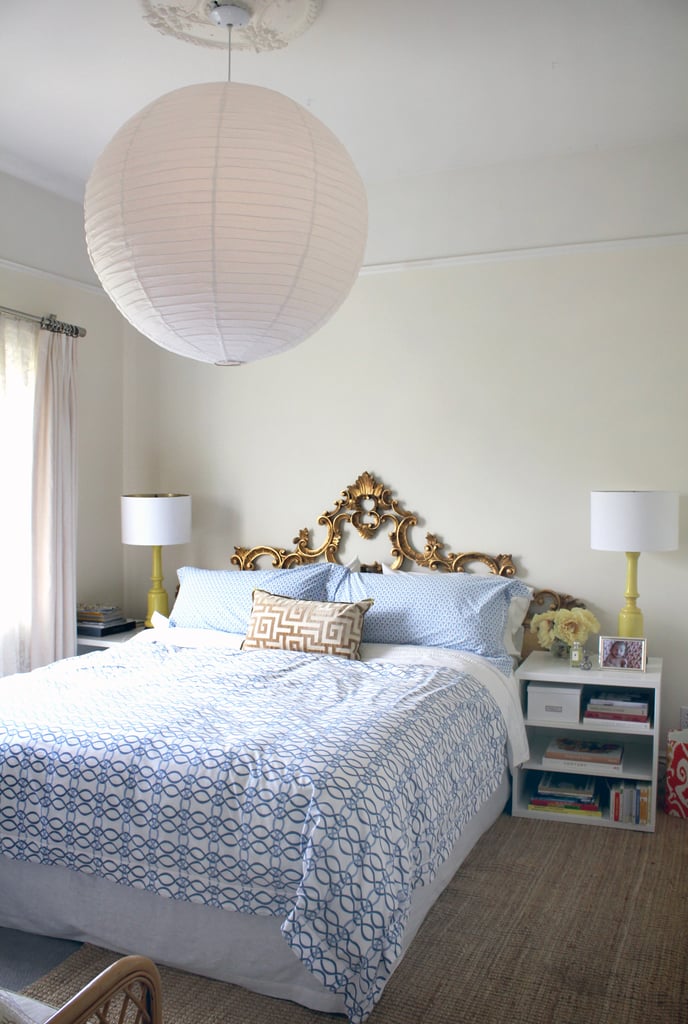
Image Source: POPSUGAR Photography
This is another trick that many renters often overlook. Take it from HGTV stars Anthony Carrino and John Colaneri who suggest you use lighting to set the tone and make an impact in a rental. Get creative with floor and table lamps that can easily be moved from place to place.
- Thou Shalt Make the Most of Plants
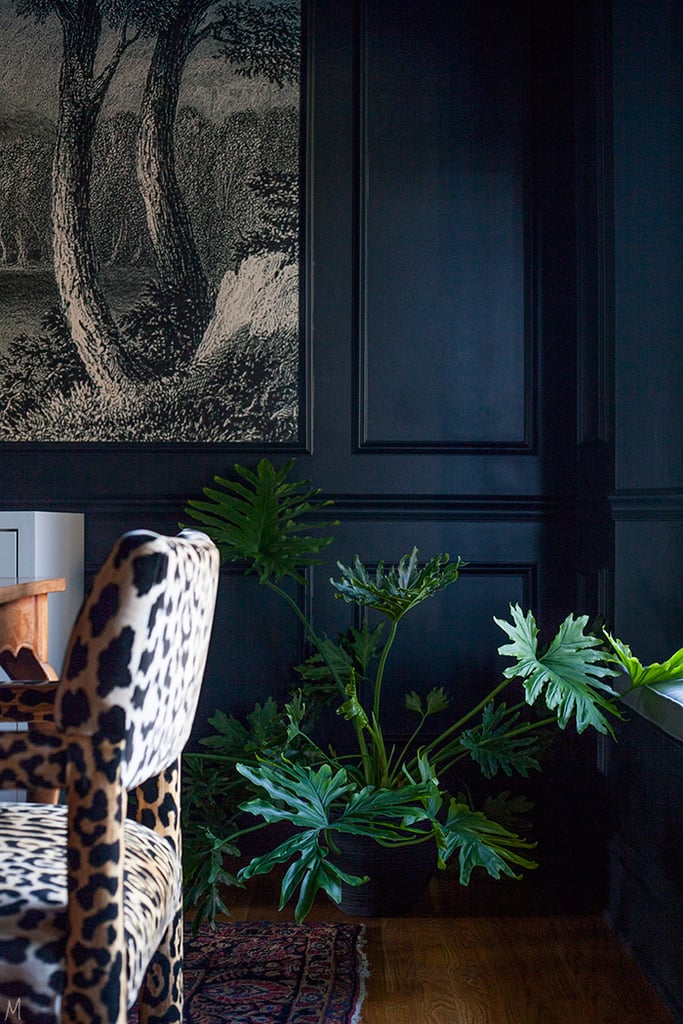
No yard? No problem. Pots are a great way to achieve the bohemian jungalow look or even have your own urban garden. The best part is you won’t have to fret about leaving any of them behind.
Comments (0)
02 July 2018
By portermathewsblog
via houzz.com.au
An interior designer reveals the essential rules for achieving a perfectly balanced interior.
Have you ever walked into a room and it just felt right, but you couldn’t put your finger on exactly why? Chances are that proportion was a key factor – whoever designed the room would have paid careful attention to getting the size and scale of the furniture and accessories just right for the space.
We talked to Rohan Smith, senior interior designer at Coco Republic Interior Design, to find out how you can create beautifully proportioned rooms in your own home.
 Why does proportion matter?
Why does proportion matter?
Because furnishing a room is more involved than simply placing a few pieces of furniture in a space – some fundamental rules of design need to be considered, one of the most important being proportion. You need to consider not only the proportional relationship between the pieces themselves, but to the space that contains them.
A room looks and feels right when the proportions are good, and there’s neither too little nor too much furniture. If furniture is too big, the flow of the room can feel awkward. If it’s too small, the space won’t feel cosy or inviting.

What are the most common mistakes people make?
Having all the furniture and furnishings in a room the same height, colour and style. The room ends up looking dull and static. This is easily rectified. A tall floor lamp, for example, can add some height to a corner, while providing a lovely ambient light source. A tall cabinet or bookcase can add visual interest as well as handy storage.

How do you assess proportion?
One of the easiest ways to assess whether a sofa, dining table or bed will suit the size of your room is to map it out with newspaper and lay it on the floor. This will give you a sense of how much floor space the piece will take up. Living with this template for a few days will give you a definite feel for how it will be to live with the piece.
A more technical method would be to use the Houzz Sketch tool or an app such as Magicplan. You simply take photos on your smartphone, which the app then translates into a plan of the space. You can then add objects, annotations and attributes to create a complete plan of your room.
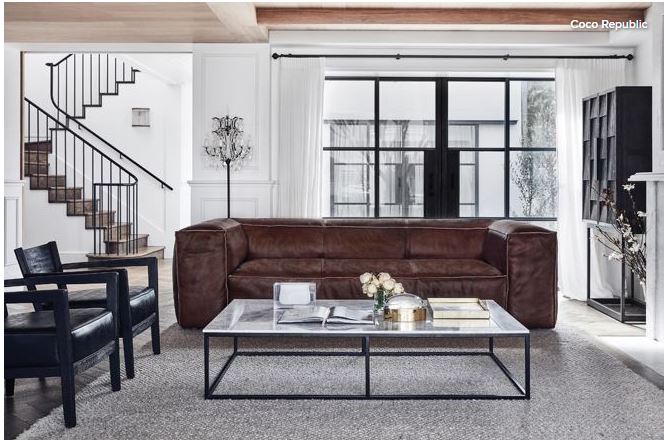
What proportions do you need to consider for a living room?
Living rooms can be tricky to get right, especially in open-plan spaces.
If the room is your main television viewing space, then you’ll need to factor in technology as well as furniture. Is the TV too big for the room? Is the entertainment unit balanced with the size of the TV, and the room as a whole? A common mistake is to have a small entertainment unit with a large TV – it should be the other way around. Also, consider whether the sofa is the correct distance from the TV for viewing comfort. It should be about 2.5 times the screen width in distance away, and no more than 5 metres. The centre of the TV should be about 1 to 1.1 metres from the floor.
A large sofa and a small rug also look unbalanced.
For living rooms, the furniture arrangement should be conducive to conversation. Two sofas facing each other or a U-shaped arrangement are ideal. The coffee table should also be the right height for the sofa. You should be easily able reach the coffee table from a seated position so you can rest a cup of tea or a glass of wine.
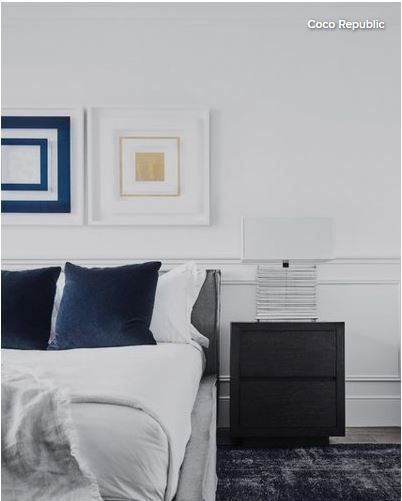
What about a bedroom?
One of the main considerations in the bedroom is the size of the bedside table in proportion to the bed. For a king-size bed, go for a large-scale beside table of about 70-90 centimetres in width, depending on the size of your bedroom. For a queen-size bed, a bedside table of around 50-60 centimetres is ideal.
Bedside lamps should also sit proportionally with the bedside table and bedhead. Again, for a king-size bed, a larger lamp will work best.

Are there any golden rules for hanging pendant lamps?
When pendant lamps are hung too high or low, they can look completely out of place in a room. You need to consider the size and style of the pendant, the ceiling height, and the space in which they will be hung.
Despite these variables, there are still a few hard-and-fast rules that can help when hanging pendants. For kitchen benches, hang lights around 70-80 centimetres above benchtops. This height allows the pendants to provide a useful light source for working, without intruding on the line of sight from the kitchen to the adjoining living or dining room.
For your dining table, sit pendants at 75 centimetres above table height to create an intimate and cosy dining space. For entries and hallways where people will be walking beneath the pendant lights, space allowing, the ideal hanging height is 240 centimetres from floor level.
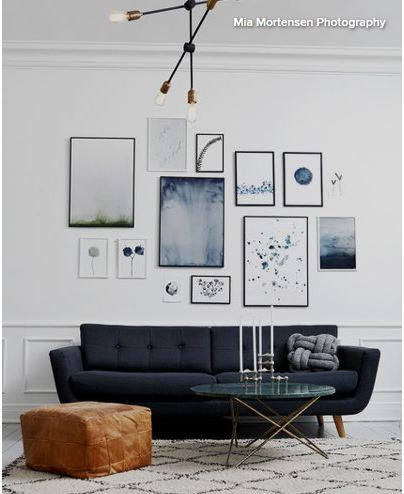
What about hanging art?
Choosing artwork that is the wrong scale for a room is a common mistake, with most people erring on the small size. Checking to see whether a gallery will allow you to bring a piece home on approval is the best way around this. If you fall in a love with a piece that is too small for your room, have it re-framed with a larger mount.
Another common mistake is to hang artwork too high on the wall. If a piece is hung too high it will have no connection to the furniture below it, and if it’s above eye level it can ruin the look of a room.
Ideally, artwork should be hung so that the centre of the piece is at average eye level or about 150 centimetres from the ground. In a dining room you might want to hang the pieces slightly lower to factor in the seated viewing height.
Also remember that having some negative space is important. Leaving some walls bare not only puts more significance on the pieces you’ve hung, but creates a calmer feel in the room.

And rugs?
Rugs are a great way to bring a furniture grouping together. They provide a border for furniture to sit on and can help you create individual dining and living zones in an open-plan room where furniture has a tendency to ‘float’. Ideally rugs should sit under the front legs of the sofa and occasional chairs – this helps visually link the pieces together.

What about the proportions for colour in a room?
When making your selection, consider the 60-30-10 rule, which is a timeless decorating principle that can help you create a balanced colour scheme. Your 60 per cent is the main colour for a room, which anchors a space and provides a backdrop for the other colours. In a living room this would be walls, sofas and rugs.
Your 30 per cent is the secondary colour, which would encompass occasional chairs, bedlinen, window furnishings and occasional furniture. It should support the main colour, while being different enough to set it apart and give the room interest.
The final 10 per cent is your accent colour. For a living room, this would include scatter cushions, decorative accessories and artwork. For a bedroom, think throw pillows and artwork.
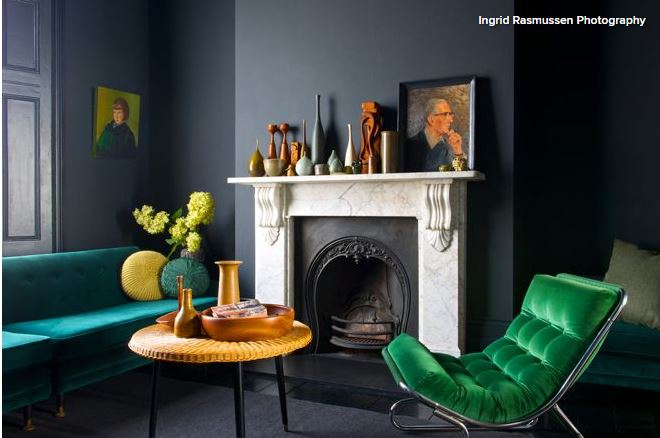
Do the rules of proportion apply to the little details too?
Keeping an eye on the proportion of decorative accessories is another important consideration. One large bowl on a dining table might be all you need in that space to create drama. Conversely, combining small objects with other similar objects can create just as much impact. A collection of ceramic pots makes one big statement, whereas a few pots scattered about will look disconnected and out of proportion.
Lamps should not overshadow the table on which they are placed. A large lamp on a slender table, for example, would appear top heavy. Too much variety of scale can cause visual chaos in a focused area, such as a bookshelf. Instead, group items of similar type and scale together, and line up like-sized books for a balanced look.

Comments (0)
04 May 2018
By portermathewsblog
via houzz.com.au
Which trends from the eighties are worth a second chance, and which ones should you forget about?
Thought 1980s interior trends were destined to stay in the past forever? You might be surprised to see how many of the interior fashions of that decade are popping up again in our homes now – albeit in very different ways.
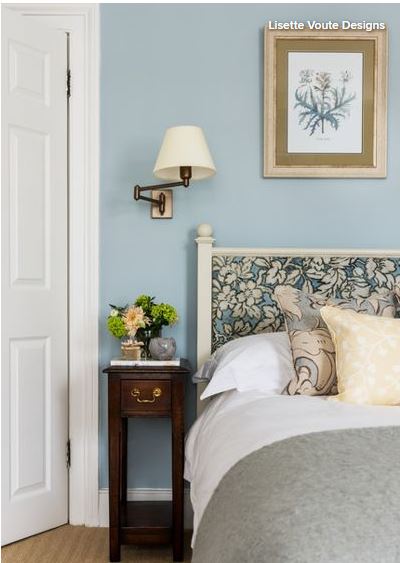 Ditch frills for refined florals
Ditch frills for refined florals
Pattern went to town in the 1980s, and in turn took city dwellers away to the countryside. No bed was complete without a pillow and bedspread adorned with florals – and of course a frilly edge and valance in an accent colour. Alas, the twee pastoral look was sadly chucked out with the chintz in the 1990s to make way for a plainer aesthetic.
But florals are back, and this time the look is more sophisticated. Take this gorgeous sleep space, for example. The pattern has been used sparingly on the bedhead and cushion, and tones with the plain surfaces elsewhere. The effect is pared back, elegant and a far cry from the Little House on the Prairie look of the ’80s.
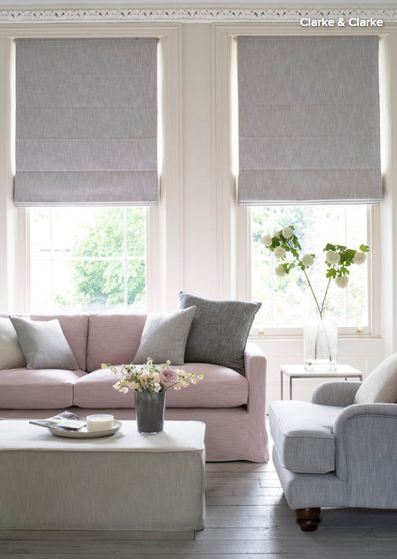
Play with pastels
Nothing sums up the ’80s love of pastels more than the dapper outfits adorned by the stars of Miami Vice. Who can forget the lilac and pink t-shirts that Crocket and Tubbs wore under their laid-back cotton suits? And our homes were resplendent in pastel shades too – pale pinks, mauves, aquas, blues and yellows all vied for centre stage in 1980s interiors.
We’re loving pastels again, however, with aqua, peach and dusty pink seeing a recent revival. Contemporary pastels are muted and look great with soft shades of grey, while peach works well with copper accessories. The key is to choose just one pastel shade and tone it with more neutral hues, rather than going for an ’80s-style pastel extravaganza.

Go for a country kitchen – just not in orange
While 1980s florals aimed for a rustic ambience, so too did many of the decade’s kitchens. The farmhouse kitchen was a big look in the ’80s. Cook spaces packed out with wall-to-wall pine cabinets might look cosy, but the orange shade of wood could also put you off your microwave dinner.
We still love our country kitchens, but the look is completely different, mainly because of the paler, more stylish oak we opt for in favour of varnished pine. We can also experiment with other surfaces, mixing and matching for a more interesting look. The kitchen here has all the elements of a rustic design, but it has been given a twist. Wood is teamed with painted surfaces, while a concrete work surface adds an industrial edge.
Go for glass tables
In the decade that saw yuppies bustling around looking busy with their Filofaxes, there’s no wonder interiors often resembled a conference room. Glass tables were a perfect addition to this slick city look, but were ditched in favour of softer alternatives in the following decades.
They’re back though, but in more elegant, less business-like guise. The popularity of black-edged Crittall-style doors has inspired some dark-framed design elsewhere, like this gorgeous glass-topped coffee table. The look is industrial yet laid-back, and the glass adds a light, airy feel to the space.
Shape up with geometrics
If you wanted a cool, trendy bedroom in the ’80s a geometric design on your doona would do the trick. The bold creations of the Memphis Design movement, with its vivid colour palette and strong forms, prompted many copycat creations. Zigzags, triangles, stripes and hexagons were everywhere, and looked fab in both bold primary colours or bright pastels.
Geometrics are popping up all over the place right now, with accessories and textiles embracing the trend for bold shapes. But some of the most interesting ways to play with shapes at the moment are on walls and floors. The hexagonal tiles on this floor have a white corner, which creates an interesting, stunning pattern.
Colour up your bathroom suites
Not only did ’80s homeowners have to pick the colour of their bathroom walls and floors, they also had to worry about the shade of their bathroom suites. Baths, sinks and loos came in a range of delightful shades, including a high-tech two tone – yes, this really was a thing. If you’d decorated in the 1970s, your avocado suite was probably still going strong in the ’80s, but all traces of green were ripped out of bathrooms in the years that followed.
We’re not suggesting a revival of the all-over avocado bathroom suite (yet), but there has been a leaning toward green wash spaces lately. The shade usually appears on tiles and wall paint, but this beautiful bathroom shows how a lick of avocado on the underside of period-style baths and sinks can look simply delicious.
Get creative with cork
Cork made it big in 1970s interiors, and continued its glory days right into the 1980s. Kitchen floors and walls were covered with this tactile material, and kids’ bedroom walls were lined with cork tiles that worked as vast pinboards for homework and Duran Duran posters.
This brilliantly versatile material has made a welcome comeback and is being used for all sorts of interior surfaces, from tabletops to pot lids. The cork flooring in this kitchen is a great choice as it’s soft underfoot, great for insulation and easy to maintain.
See green with indoor plants
In an era where more was more, house plants were a great way to add that extra touch. Greenery was everywhere, popping up in bathrooms, jazzing up living room window sills and bringing the outdoors into glass conservatories.
House plants are breathing fresh air into our homes once again, which can only be good news. They not only warm up the space, but they make the air healthier, too – a win-win.
Frame your walls
A 1980s wall was never really complete without a wallpaper border. Wall coverings came with a matching frieze, so it was easy to add a complementary edging to your wallpaper design. Things have changed and now walls are more likely to fade into the edge, with some designers even choosing the same shade for ceilings, walls and joinery to merge the whole thing together.
Frames aren’t lost forever, however, as designers are getting creative with skirting boards. Paint them in a contrasting colour to the walls, or even choose one of the new patterned boards on the market, to give your room a sharp, defined border.
Leave it in the ’80s: bathroom carpets
Take a look at this beautiful bathroom space. Would you put a carpet on that floor? In the ’80s they would have, and maybe a fluffy floor mat around the loo as well.
With the vast array of floor surfaces available now, there’s no need to put fabric underfoot in your bathroom. The rustic look on the floor of this room has been created with wood-effect tiles, which give the same warm look as wood, but are much more resistant to water.
Tell us
Which of these 1980s looks are you happy to revive? Share in the Comments section. And if you enjoyed this story, like it, save it, save the photos and share your thoughts below. Join the conversation.
Comments (0)
04 May 2018
By portermathewsblog
via popsugar.com.au
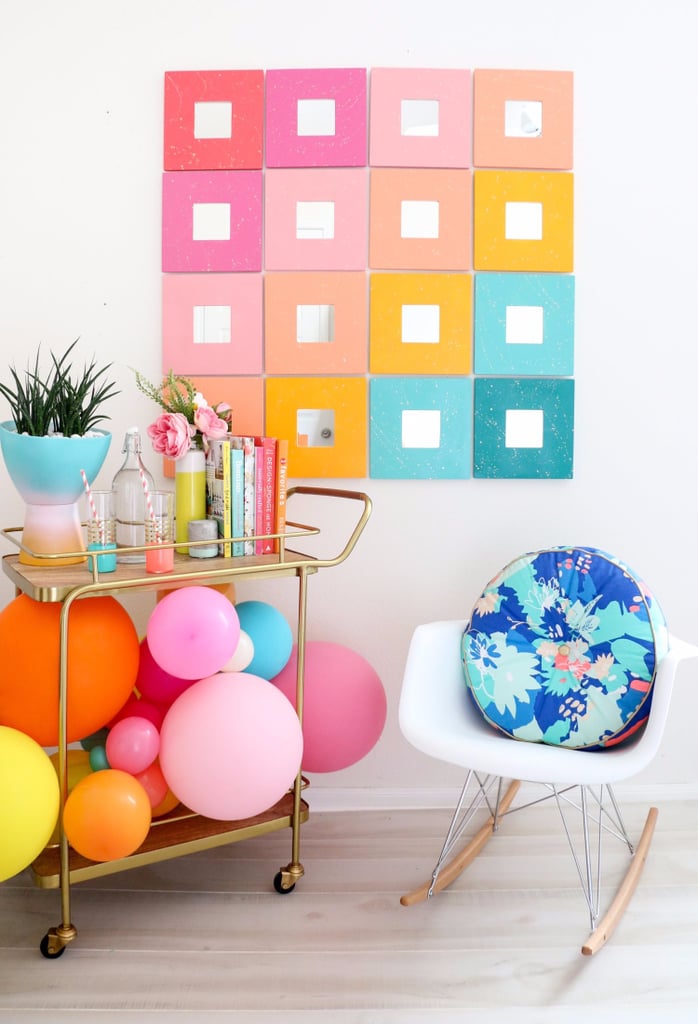 Image Source: A Beautiful Mess
Image Source: A Beautiful Mess
When it comes to astrology, let’s admit it: who doesn’t love reading their monthly horoscope? Gaining insight into your future relating to your career, relationships, health, and beyond is not only intriguing and exciting, but often, it can be extremely accurate. So, when we heard about a mashup that existed between astrology, design, and colour theory, we had to know more.
This hybrid idealism, coined “colourstrology” by astrologist and numerologist Michele Bernhardt, is thoroughly mapped out in her book Colourstrology: What Your Birthday Colour Says About You. Michele has created a comprehensive chart of Pantone colours that are assigned to every single day of the year as well as one colour for each month. Using ruling planets, sun signs, and the influence of numbers and other important dates, Michele has determined which colour creates the highest benefit for each.
So locate your birthday month ahead, and read on as we break down your most beneficial colour as well as exciting ways you can incorporate it into your home space for an extra boost of positive energy.
January: Caramel
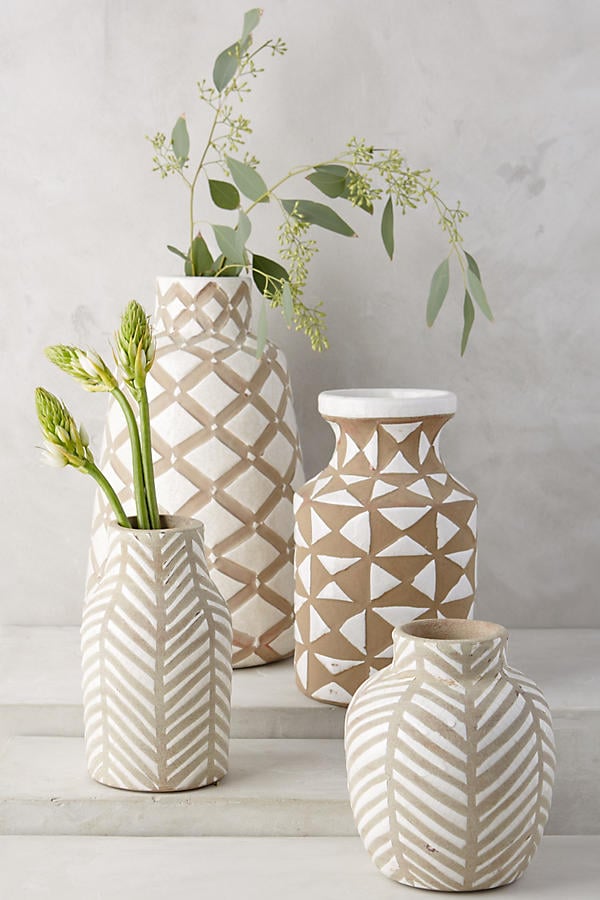
Image Source: Anthropologie
Hues of caramel can connect you back to the earth and keep you centered and focused. If you are a January baby, try investing in some terra cotta planters and arrange them on your patio or near your windowsill for the ultimate energy boost. Plus, the dark brown colour of the plant soil will also add to the effect.
February: Sheer Lilac
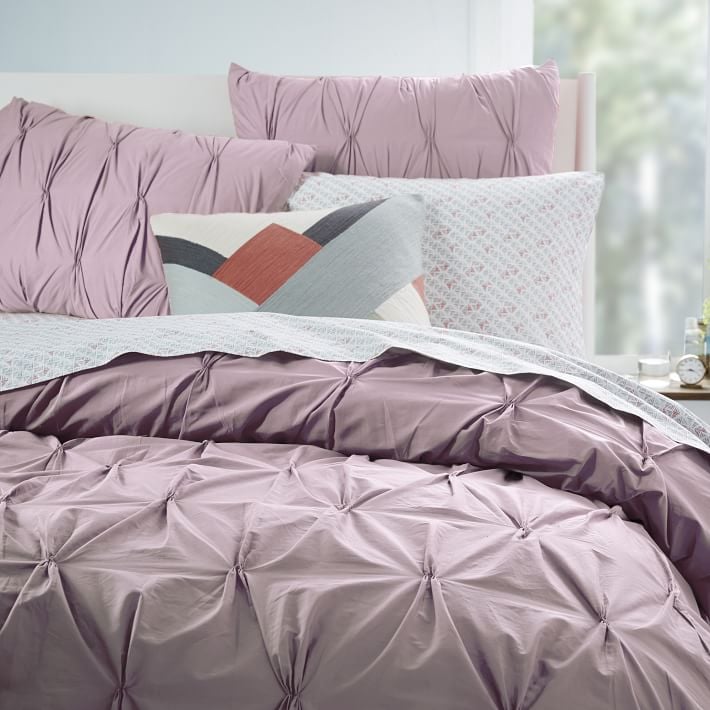 Image Source: West Elm
Image Source: West Elm
Sheer lilac can improve friendships and cast a vibe of kindness across you and any of your home visitors. Using lilac-coloured mugs and tableware can be the perfect way to receive the benefits of this colour while you enjoy tea or a meal among pals.
March: Fair Aqua
 Image Source: A Beautiful Mess
Image Source: A Beautiful Mess
Fair aqua can increase relaxation and encourage meditation, so it is just the right colour to include in your bedroom design scheme. Choose a bedding set with bursts of aqua, or try to find a solid aqua blanket that can come in handy both at bedtime or for any lazy Sunday naps out on the couch.
April: Cayenne
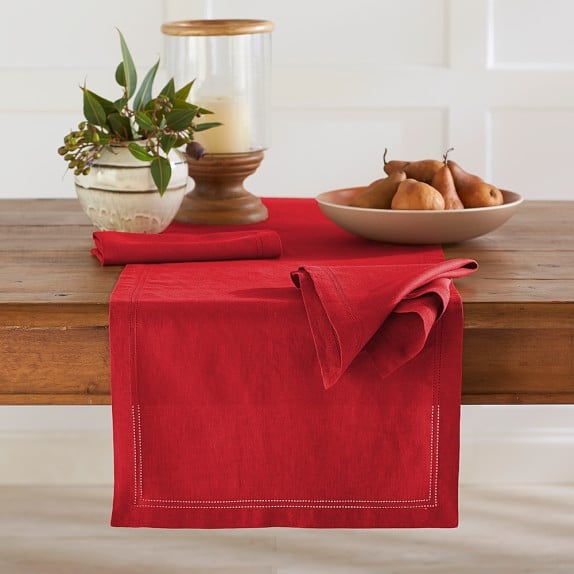
Image Source: Williams-Sonoma
Cayenne is a bright and intense colour, so be sure to implement it in a space that definitely requires a burst of vitality. If you have a home gym, try painting one wall this bold colour, or add a vibrant table runner to your kitchen nook for an extra pick-me-up in the mornings while you eat breakfast.
May: Bud Green
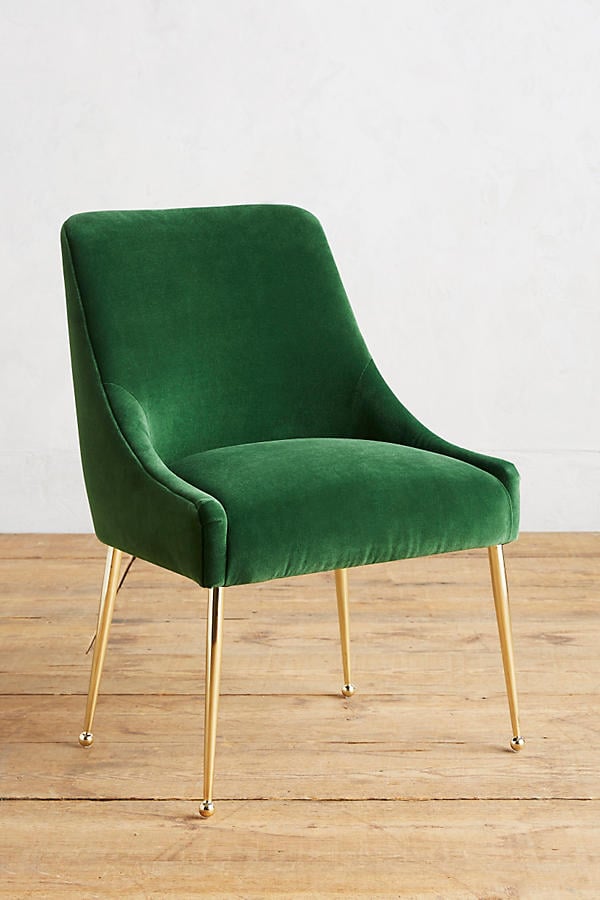
Image Source: Anthropologie
The colour bud green is closely linked to prosperity and success, so if this is your birth colour, be sure to incorporate it into your home office or desk space. Try including a green upholstered side chair to maximise this colour’s benefits or, if you’re cramped with space, a sleek green laptop cover or mouse pad will do just fine.
June: Aspen Gold
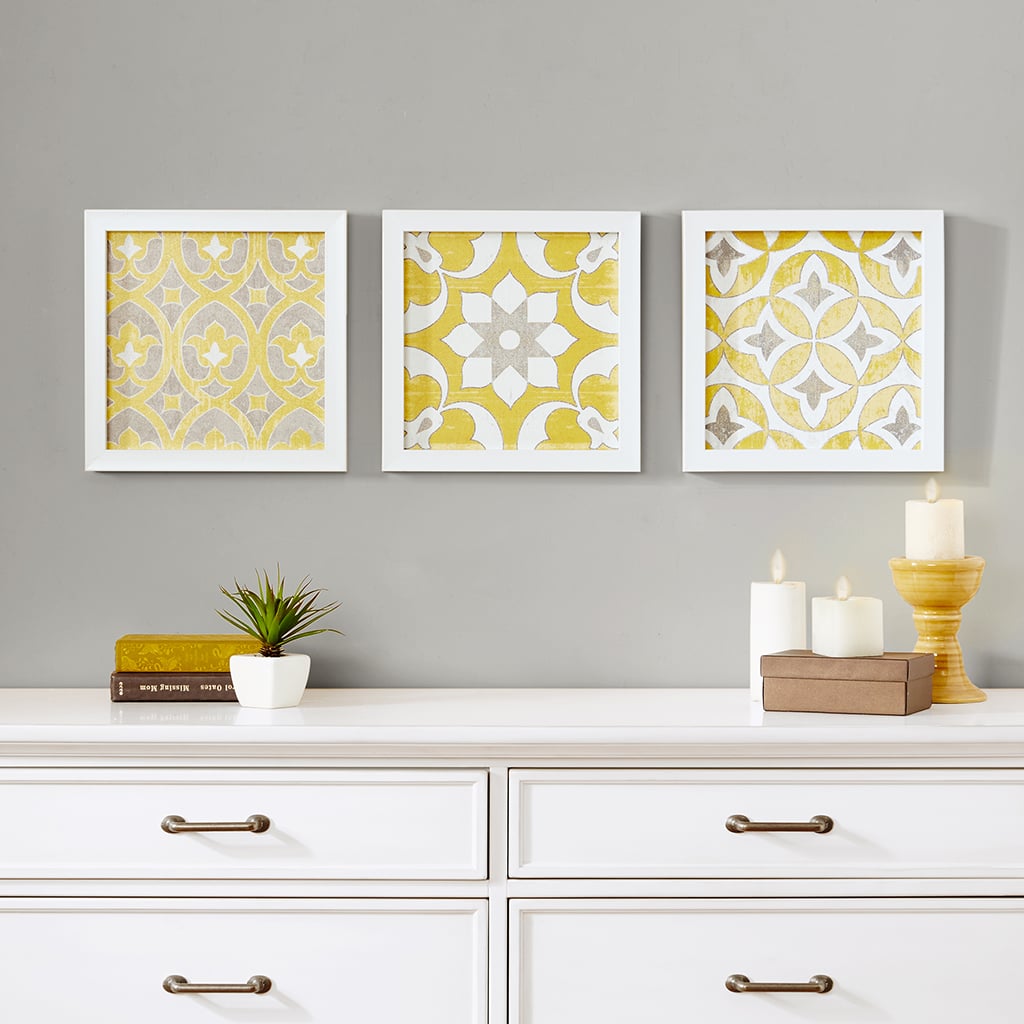 Image Source: Designer Living
Image Source: Designer Living
Aspen gold can promote successful communication, so think about which room in your home receives the most conversational activity. Painting the walls of your dining room a nice golden colour could be a good touch, or hanging art with bold yellow features is another way to get the most of June’s assigned colour.
July: Coral Blush

Image Source: Wayfair
July’s coral blush colour is extremely calming and promotes love and sensitivity, so adding this colour into areas of your home that you closely share with a partner is key. An area rug in a gorgeous blush hue placed in either your living room or bedroom is a genius way to infuse this colour into your space.
August: Sun Orange
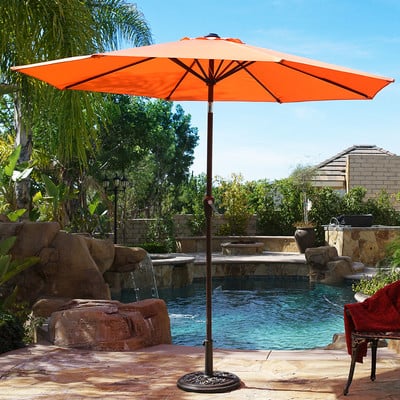
Image Source: Wayfair
A happy, bright sun orange is the best way to promote playfulness and fun, so recreational areas in your home are the best place to feature this colour. Placing a bold orange umbrella out on your patio will not only liven up your space, but it will definitely encourage lots and lots of outdoor Summer fun.
September: Baja Blue
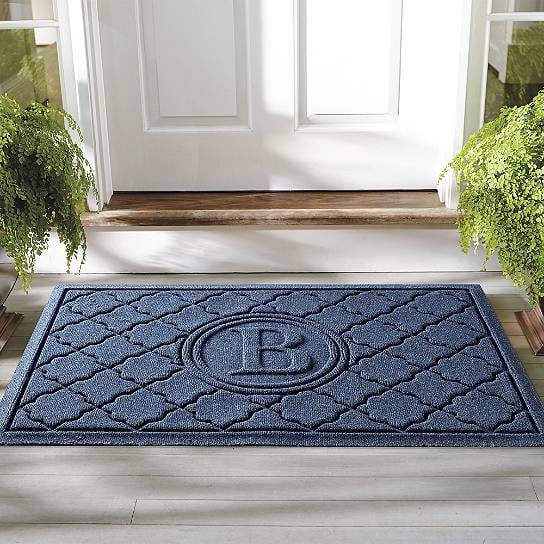
Image Source: Grandin Road
The distinct baja blue is synonymous with both beauty and attractiveness and is an amazing color to feature right in your entryway. Grab a welcome mat in this hue, or hang a framed print duo near the door to gracefully (and charmingly) welcome your guests.
October: Cerulean
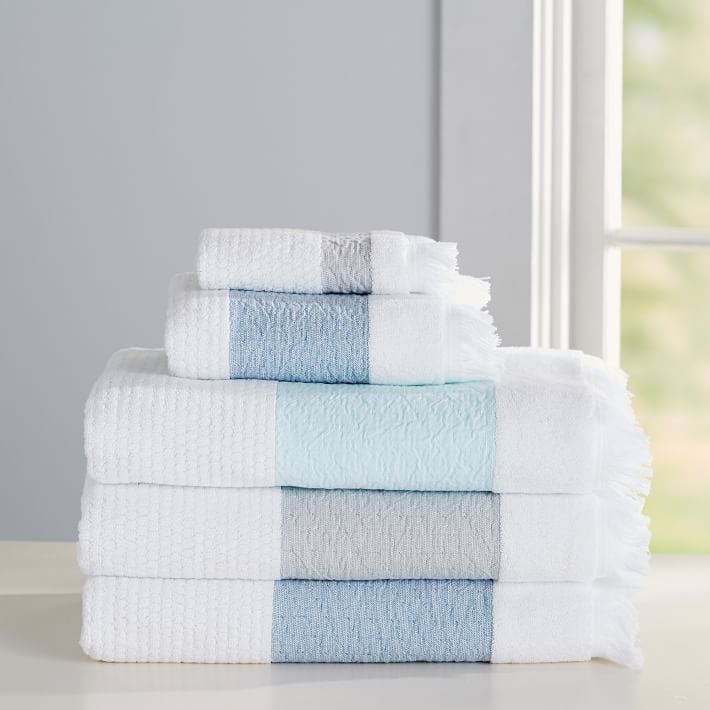 Image Source: PB Teen
Image Source: PB Teen
Cerulean is another colour heavily linked to relaxation and tranquility, so it is an ideal choice for your master bathroom. Whether you decide to paint the walls in this shade or find a towel set in a similar hue, you are sure to enjoy the calming benefits.
November: Claret Red
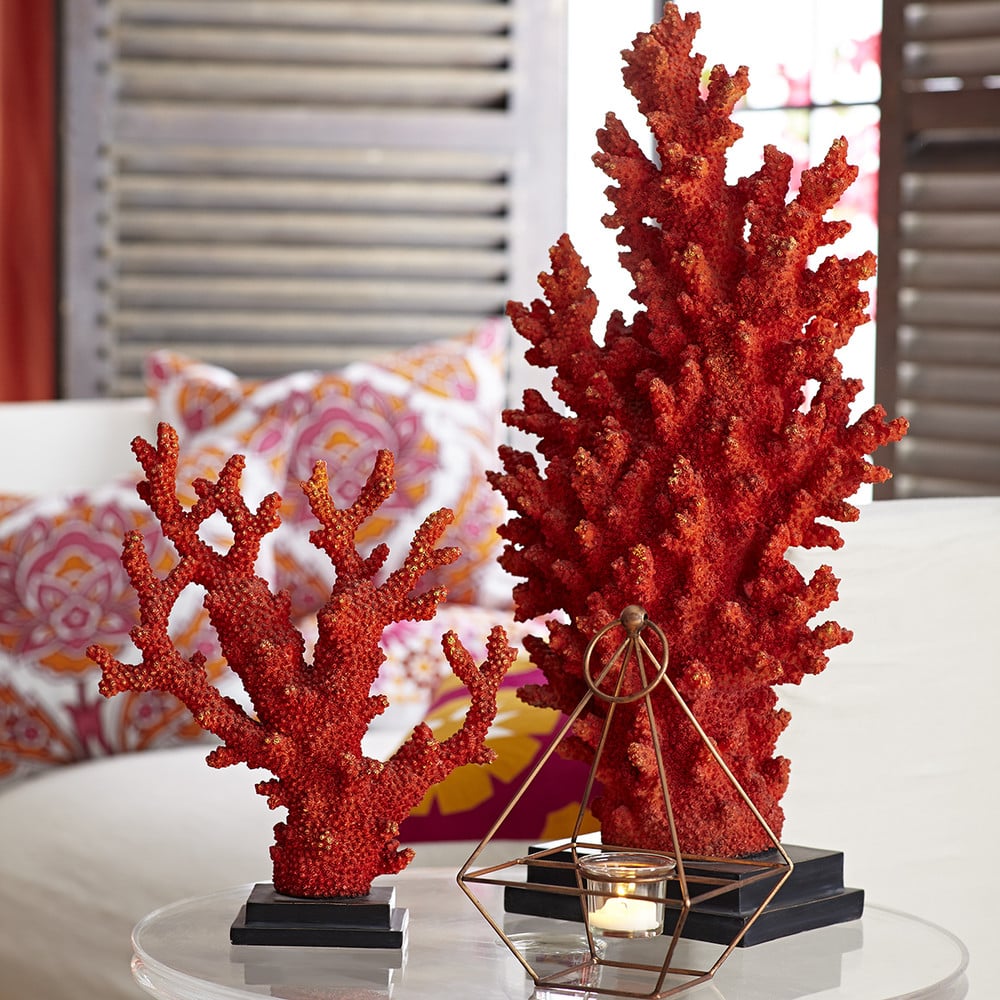 Image Source: Wisteria
Image Source: Wisteria
This deep claret red is strongly linked to the libido and nurtures physical connection, so incorporating it into your bedroom space can do wonders for you and your partner. And since this colour is quite bold, focus on finding some smaller claret red accents, like a ring tray or small sculpture, to place on top of your nightstand or nearby dresser.
December: Pagoda Blue
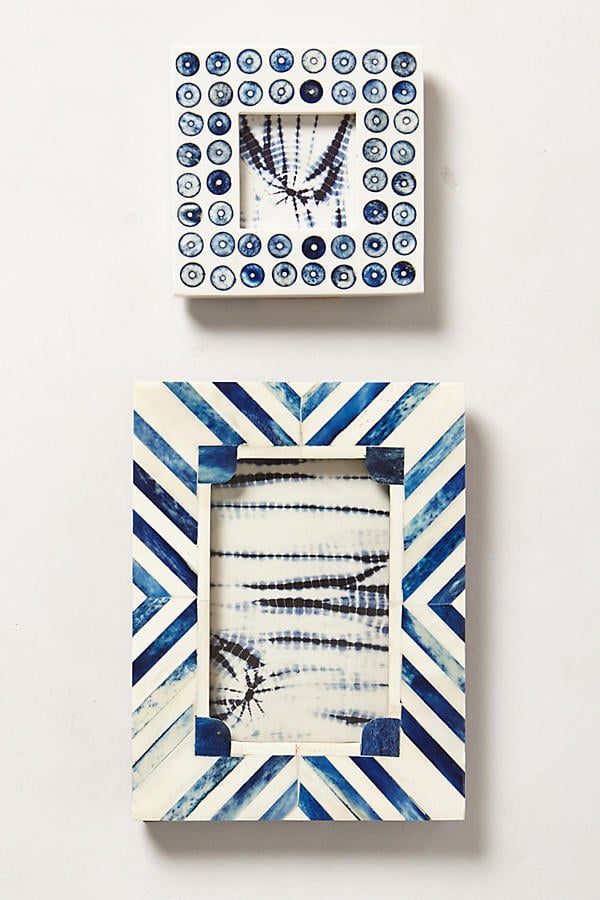
Image Source: Anthropologie
Pagodea blue symbolises vision, wisdom, and travels, so it is the perfect colour to feature in a bookcase display or wall collage to promote interest and vision. Try locating blue bookends or decorative coffee table books with bold blue accents or even a hanging picture frame with blue rims for an extra dose of imagination in these spaces.
Loving colourstrology? If you are interested in finding out today’s specific colour, just click here!
Comments (0)
13 April 2018
By portermathewsblog
via popsugar.com.au
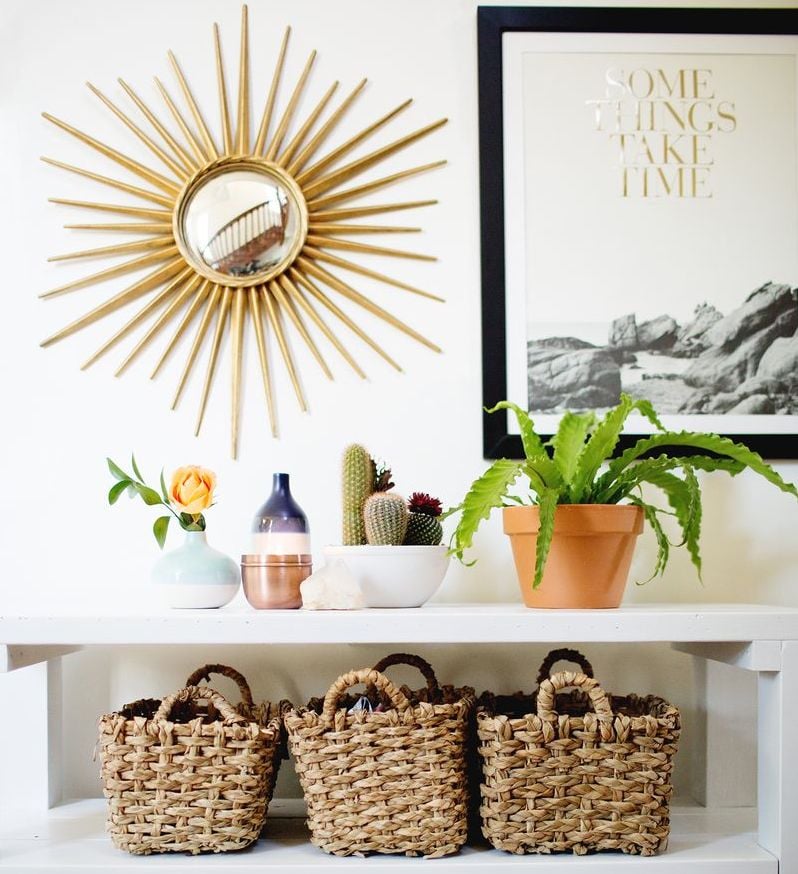
There’s an art to living thoughtfully in cramped quarters, but there’s a science to choosing pieces that will make the most of your square footage. These decorative essentials seem to pop up in the most stylish small spaces again and again. So tell us, are these space-saving pieces in your home?
Source: A Beautiful Mess
Nesting Tables
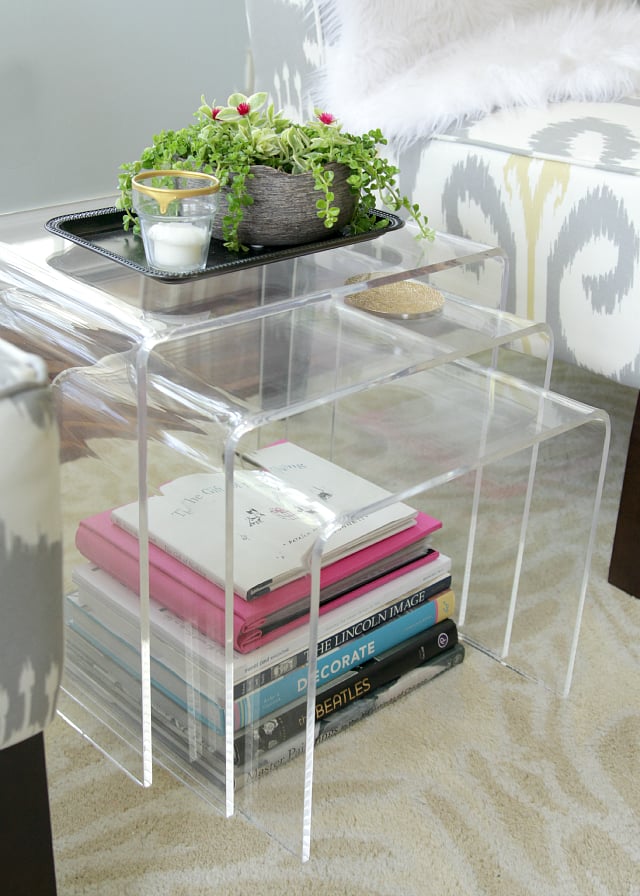 Image Source: Decor Fix
Image Source: Decor Fix
Three tables for the space of one? That’s the beauty of nesting tables. Fan them out when you need more surface area, move them around if you have guests, then tuck them in when you’re done.
Bonus tip: choose an acrylic option, like the set Decor Fix blogger Heather Freeman has to take up less visual space!
Poufs
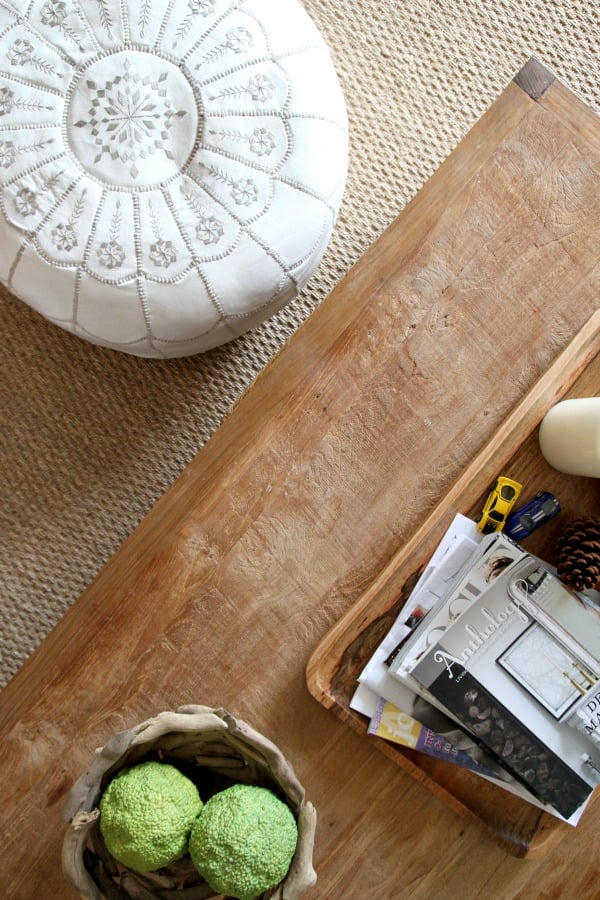
Image Source: House*Tweaking
If you’re a pouf pessimist, you’re underestimating their versatility. Set snacks out on your coffee table, and watch your friends flock to the poufs for prime seating. Position one in front of a chair, and you have an instant lounger. Place one next to your sofa, set a tray on top, and admire your new side table. Best of all, they can be stacked or stored under your coffee table when you aren’t using them.
Floating Shelves
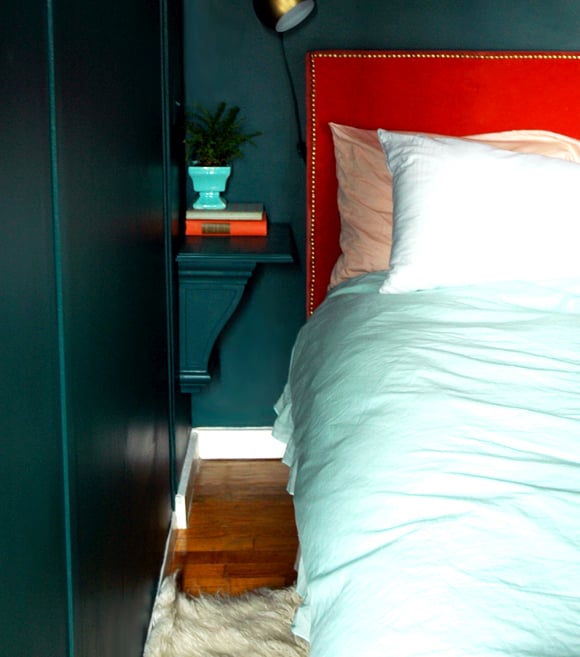
Image Source: Little Green Notebook
Floating shelves are ideal for adding more storage than your floor plan allows for. This cramped bedroom didn’t have room for a nightstand, but Jenny Komenda from Little Green Notebook created a smart floating-shelf alternative.
Large Mirrors
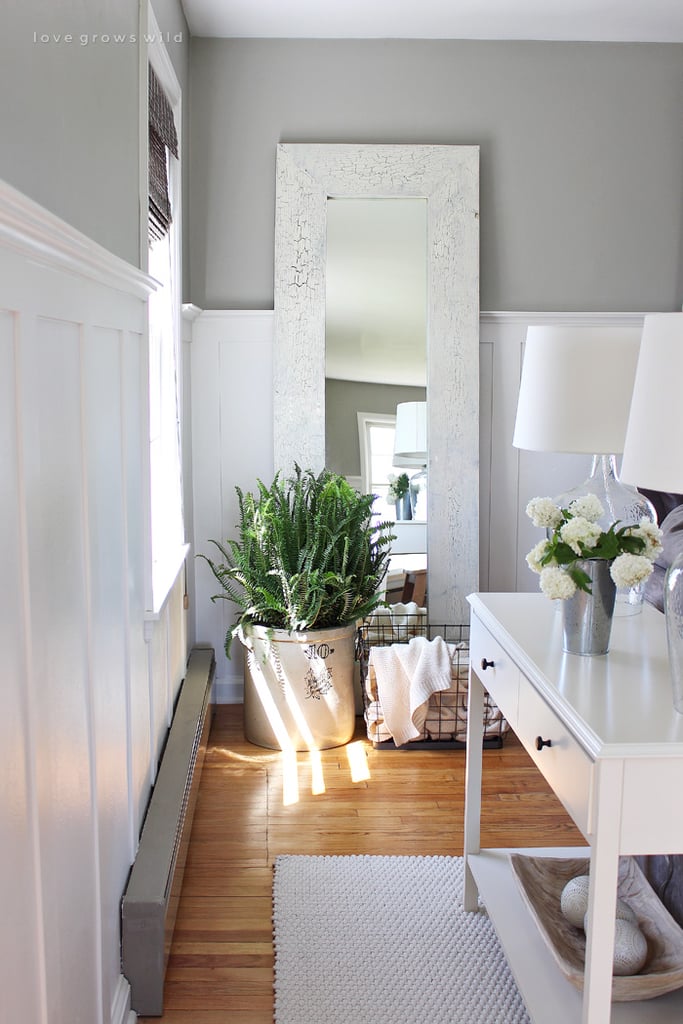 Image Source: Love Grows Wild
Image Source: Love Grows Wild
If you can’t knock down walls, add mirrors. They have the power to reflect light and visually expand a room, so it looks much larger than it actually is.
Pro tip: try styling a large mirror (like the one in Jillian Harris’s home) by layering it behind another piece of furniture.
Hanging Storage
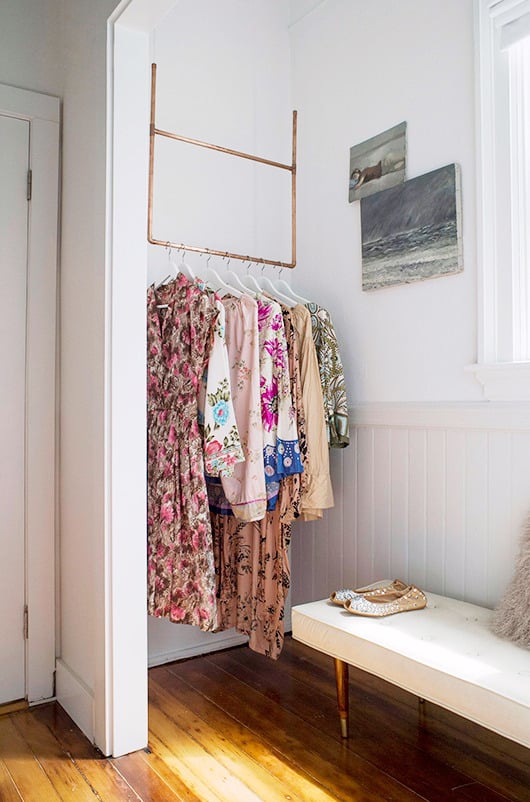
Image Source: SF Girl by Bay
You may not have a walk-in closet, but even an unused nook or corner can serve as an impromptu closet if you hang a DIY copper-pipe rack.
Baskets
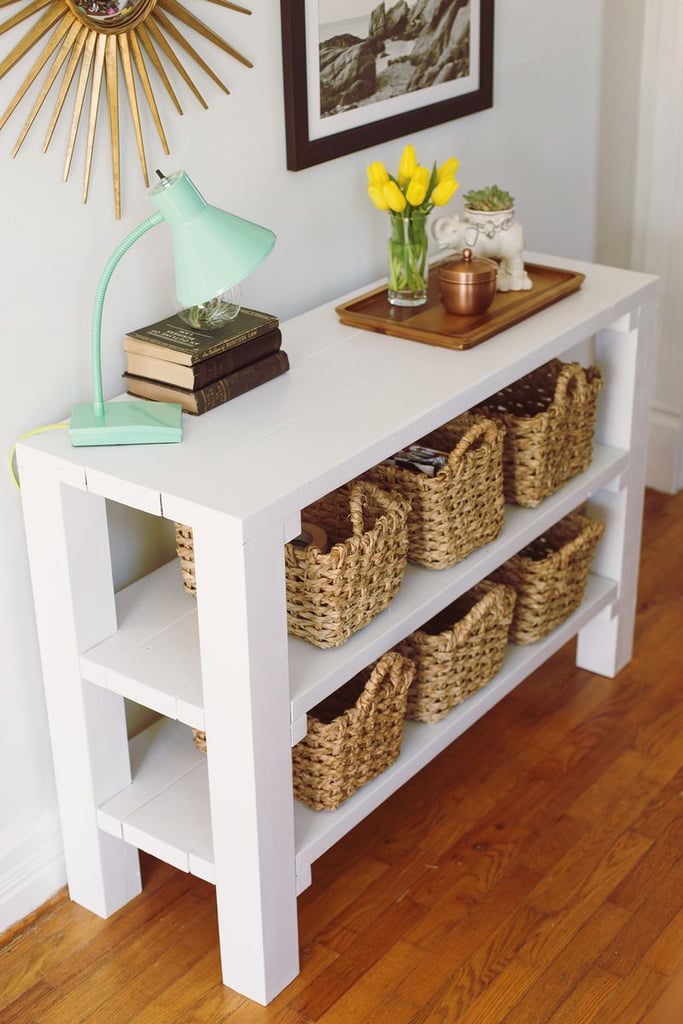 Image Source: A Beautiful Mess
Image Source: A Beautiful Mess
Whether you choose larger lidded options to slide under a console table or line shelves with smaller versions, baskets are essential for organising clutter.
Rolling Carts
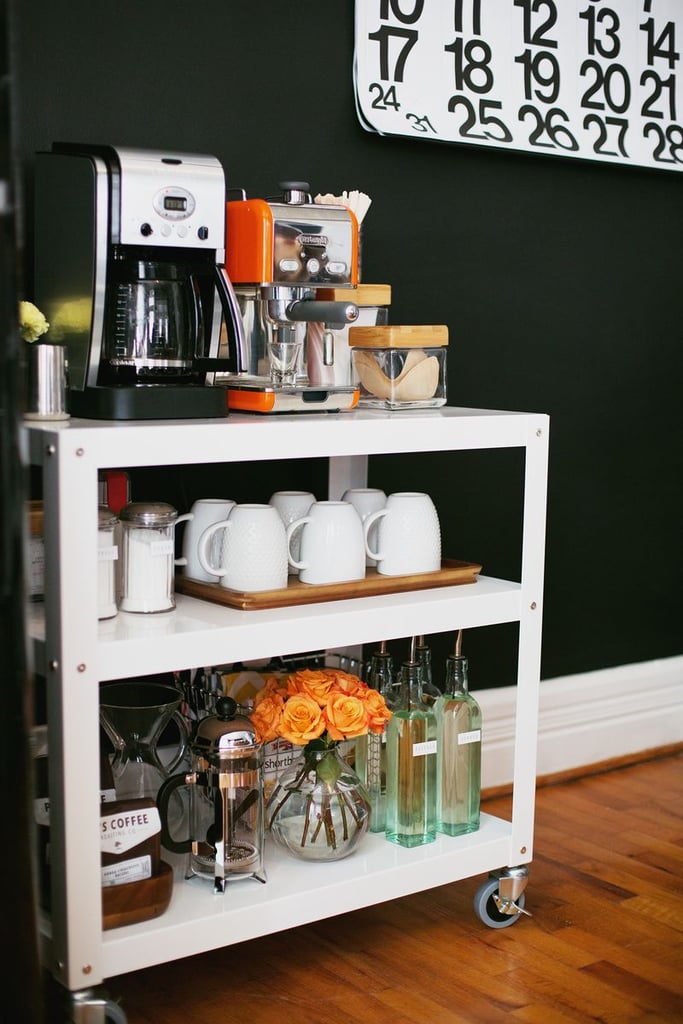 Image Source: A Beautiful Mess
Image Source: A Beautiful Mess
There are a myriad of ways to utilise a rolling cart. It can be used as everything from a bar cart (or better yet, coffee station!) to a nightstand. Wheels make it easier to move to different spots . . . like the living room, if you’re entertaining.
Pretty Boxes

Source: Manuel Rodriguez for One Kings Lane
The key to making any bookshelf look immaculately streamlined is to load it with beautiful boxes. It’s the perfect way to hoard anything from receipts to your washi tape collection without having your belongings look like a mess.
Under-the-Bed Storage
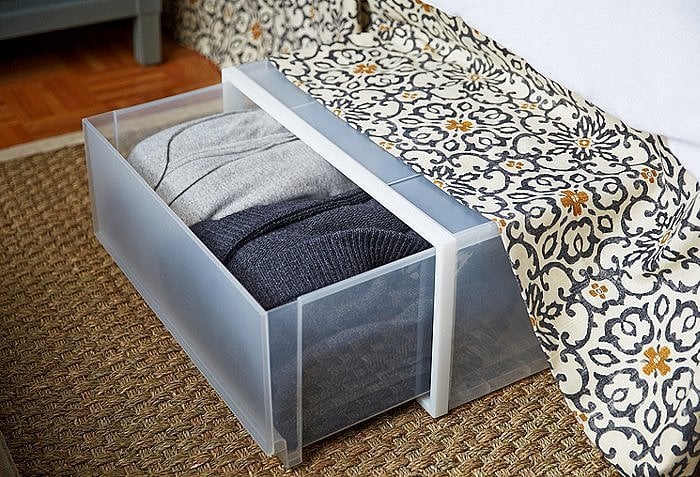 Image Source: Tony Vu for One Kings Lane
Image Source: Tony Vu for One Kings Lane
A bed skirt and a plastic pull-out container is your ticket for storing seasonal clothes without anyone having to know. You have the space, so why not use it?
Hanging Coatracks
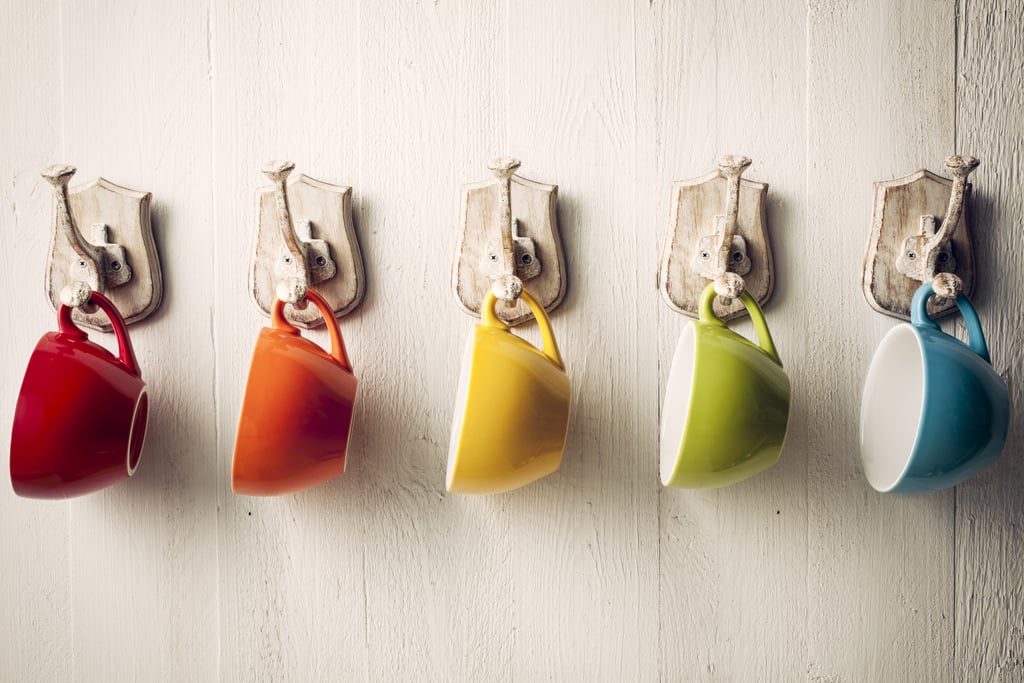 Image Source: iStock
Image Source: iStock
Sure, you could hang coats or hats from these racks, but there’s no need to stop there. Display a set of cabinet-hogging mugs in your kitchen, or organise necklaces in your bedroom. The possibilities are endless.
Stackable Storage
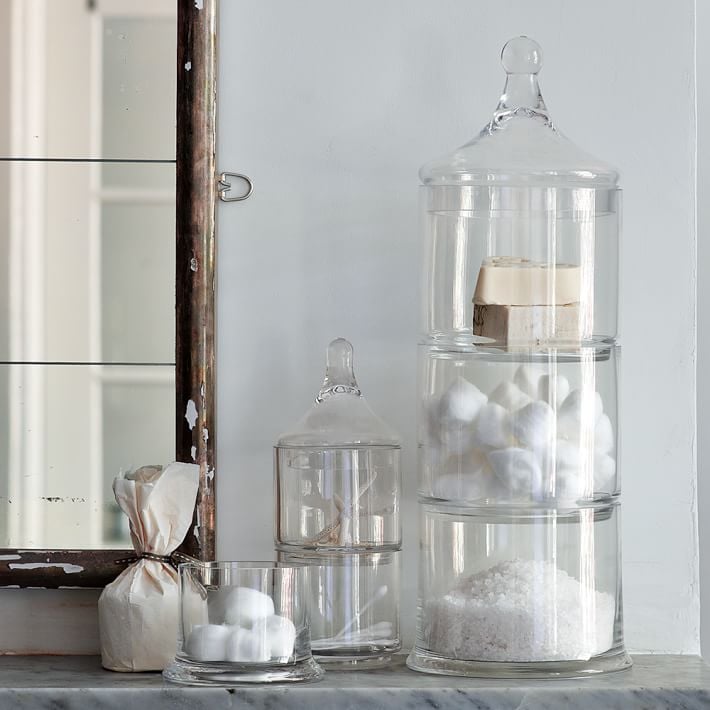 Image Source: West Elm
Image Source: West Elm
If you’re short on counter space, think vertically. This stackable apothecary set is ideal for keeping bath and beauty supplies within reach.
Slim Hangers
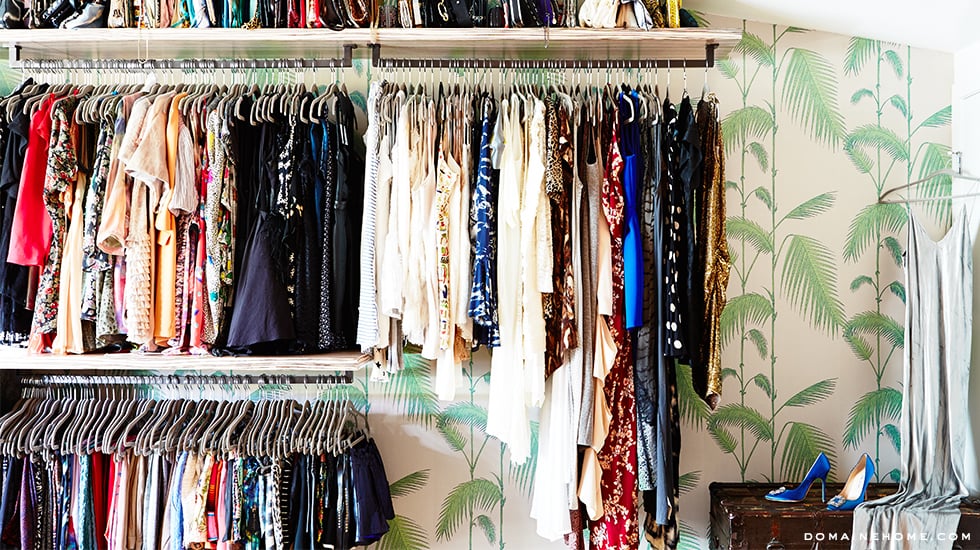 Source: Justin Coit for Domaine Home
Source: Justin Coit for Domaine Home
Former-reality-star-turned-fashion-designer Whitney Port uses these slim hangers to pack in as many clothes as possible in her cute closet space.
Comments (0)
06 April 2018
By portermathewsblog
Image Source: POPSUGAR Photography / Julia Sperling
Home decorating is a hefty investment. Whether you’re renovating or rearranging a room, shopping for a new piece of statement furniture, or designing a new home, there’s always plenty of what ifs to consider. Where to put the lounge? Will it even fit? Ivory or eggshell? It’s a process that can make the best of us question our decision-making abilities.
Of course, like any educated 21st-century citizen would do to make life easier, you turn to apps. And of course, like any 21st-century dilemma, there are plenty of technological solutions for it. Below, we’ve found the five best apps to help you in whatever decorating rut you may find yourself in.
For Inspiration and Ideas
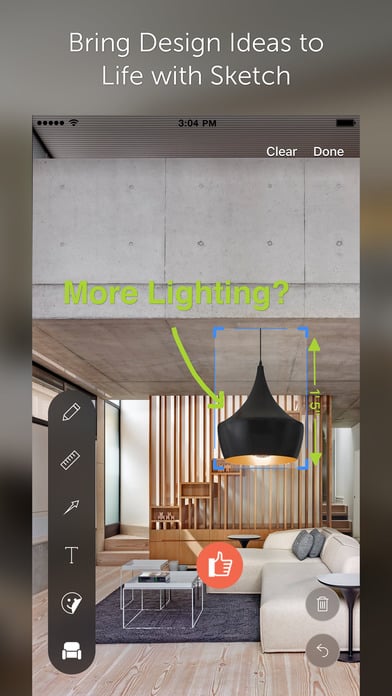
Try: Houzz Interior Design Ideas, Free on iOS and Google Play
Browse through countless photos for inspiration, use the sketch feature to bring your dream room to life, or find a local home professional to help you out with all your decorating needs. The app’s also got a nifty product section to make sourcing products easy.
For Colour Selection
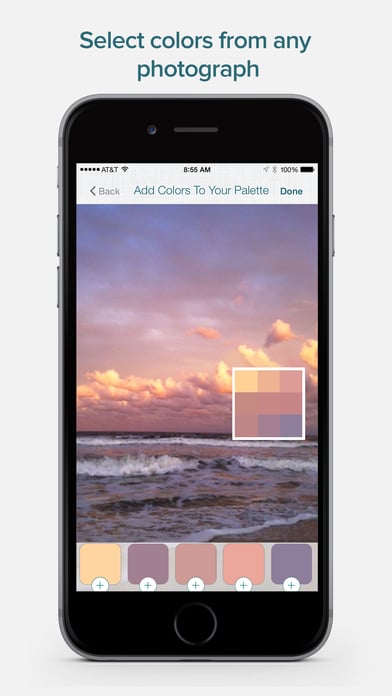
Try: Color911, $5.99 on iOS
Whether you want to create a colour scheme for a room, or can’t decide what shade of turquoise will match your throw pillows, Color911 makes colour selection easy. Choose and download from more than 100 colour themes, or build your own custom palette library from photos.
For Collecting Measurements
Try: Photo Measures, $10.99 on iOS and $4.99 on Google Play
Love the look of a couch but aren’t quite sure if it’ll fit in the space you have? Photo Measures takes the guesswork out of this and allows you to snap photos of every room and draw measures on it. Record and save everything from your living room space to bookshelf width.
For Room Planning
Try: Mark on Call, $4.49 on iOS
Who said floor plans were intimidating? Mark on Call is like having a personal interior designer at your fingertips, allowing you to map out each room to precision. Enter your room and furniture dimensions and you can rearrange pieces until your heart’s content, even with your skin or finish of choice.
For Real-Time Visualisation
Try: IKEA Catalogue, Free on iOS and Google Play
The app’s 3D and augmented reality feature allows you to visualise what pieces of furniture will look like in your home, meaning hassle- and worry-free shopping. You can even pull pieces directly out of current catalogues, or choose from iconic IKEA pieces in the library.
Comments (0)
22 February 2018
By portermathewsblog
via popsugar.com.au
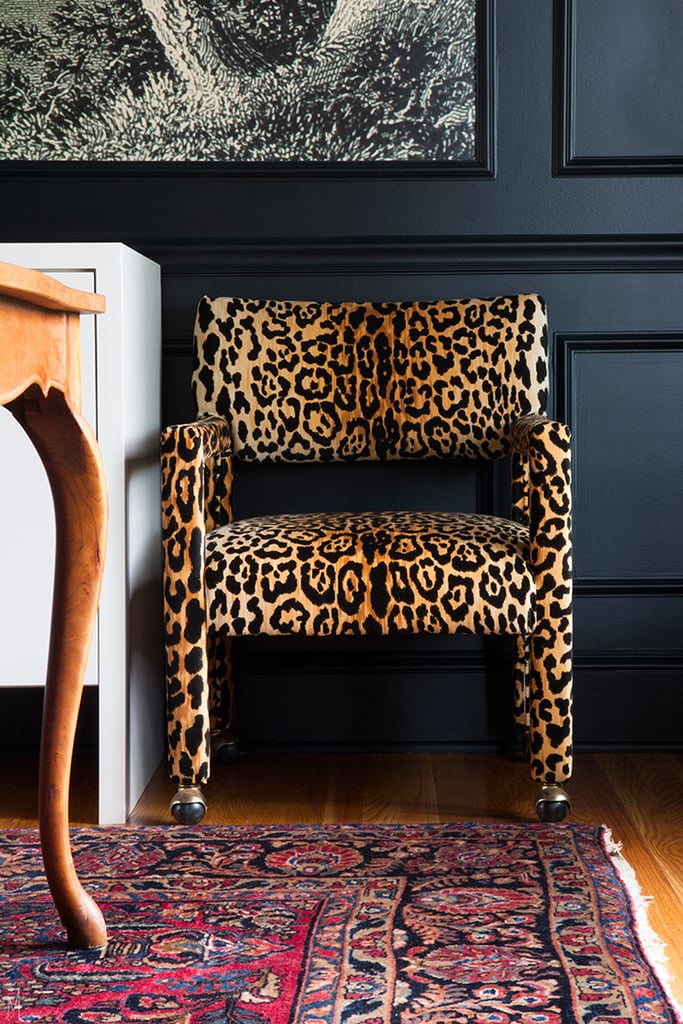 Image Source: The Makerista
Image Source: The Makerista
Switching up your decor can make a surprisingly huge difference in the way you feel at home, but beware of common decorating traps. Before you tackle these bold design updates, be mindful not to do these 9 things:
1.Don’t Forget About Lighting
 Image Source: A Beautiful Mess
Image Source: A Beautiful Mess
Even the most beautiful of rooms can be thwarted by bad lighting. The most welcoming spaces are filled with soft layers of flattering lighting at various heights (a chandelier, floor lamp, desktop lamp, etc.), not just one harsh light source. If the space has little natural light, use mirrors to brighten it up by reflecting what natural light there is around the room.
2. Don’t Hang Pictures at the Wrong Height
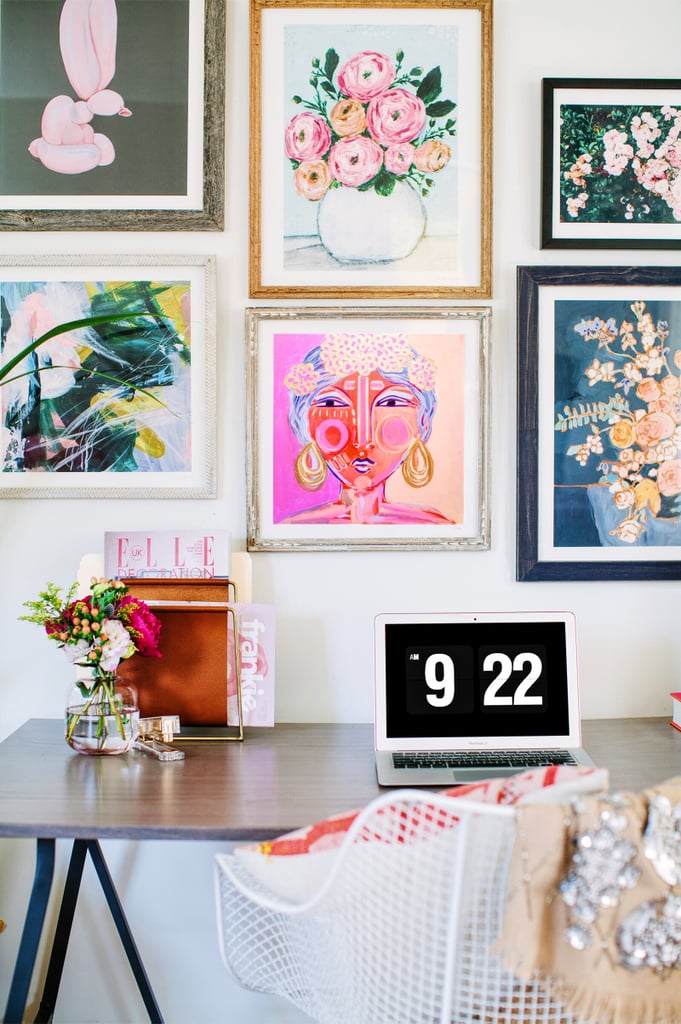 Image Source: Honestly WTF
Image Source: Honestly WTF
You’ve found the perfect picture, paired it with the perfect frame, and now it’s time to hang it at the perfect height. The centre of the image should be at eye height, around 144cm — lower than most people expect. If you’re putting up a gallery wall, you not only need to be thoughtful with the height of the image but also the layout. Take care to mock up where each picture will go before you start putting nails in the wall.
3. Don’t Have Tons of Throw Pillows
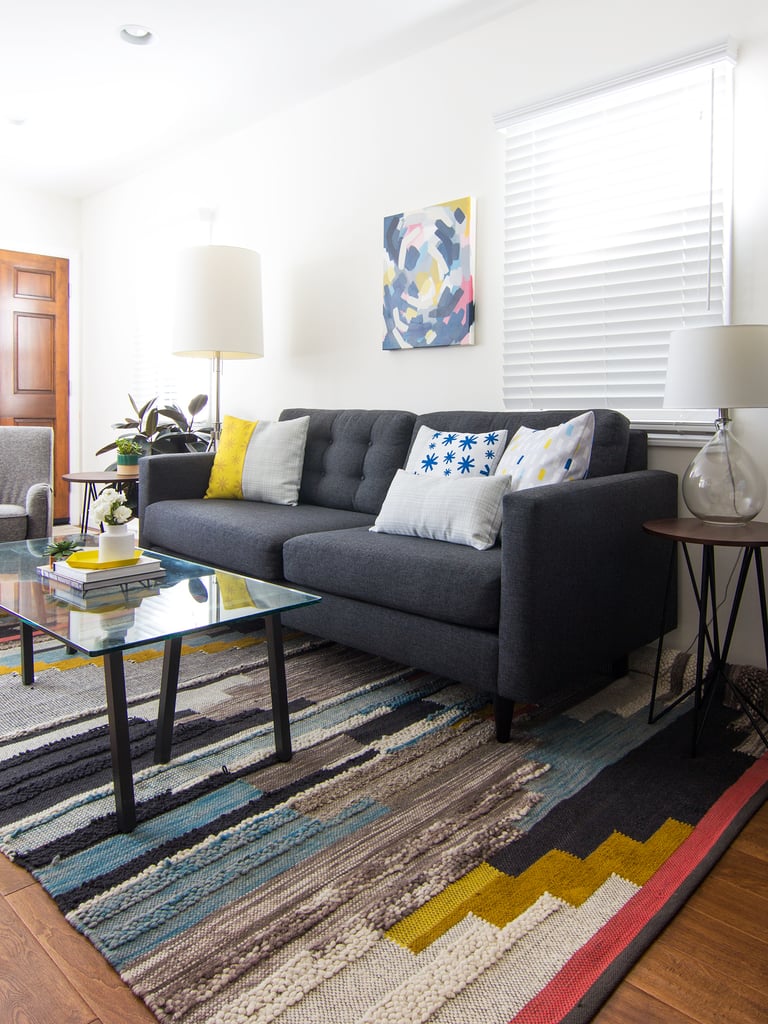 Image Source: Sarah Hearts
Image Source: Sarah Hearts
They’re affordable, easy to swap out, and a great way to transform the look of a room; however, it’s easy to get carried away with them, picking up one or two every time you’re shopping until you have no space on your sofa left to actually sit. If throw pillows are deflated and flat, or more tired than trendy, it’s time to toss them. As a rule of thumb, only buy a new pillow if you’re willing to part with an old.
4. Don’t Blindly Follow Trends
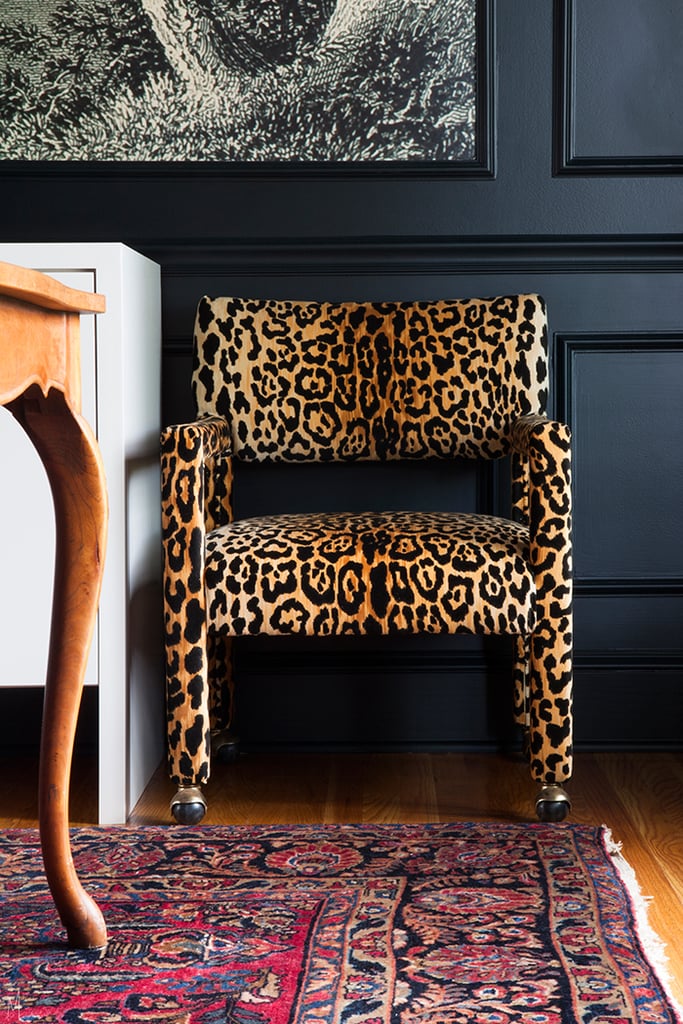 Image Source: The Makerista
Image Source: The Makerista
Of course, you want your interior design to be up-to-date, and it’s great to keep an eye on the 2016 trends — but beware of incorporating every trend into your home. Rose quartz and serenity might be the colours of the year, but that doesn’t mean you need to repaint all your walls. Just as with fashion, certain trends work better for certain people, so adopt and adapt as best suits your home and needs. If the season’s dark and moody hues are too much for your space, paint a single accent wall and incorporate edgy leopard in an occasional chair that can easily be swapped out as tastes change.
5. Don’t Go Overboard With Decorative Painting
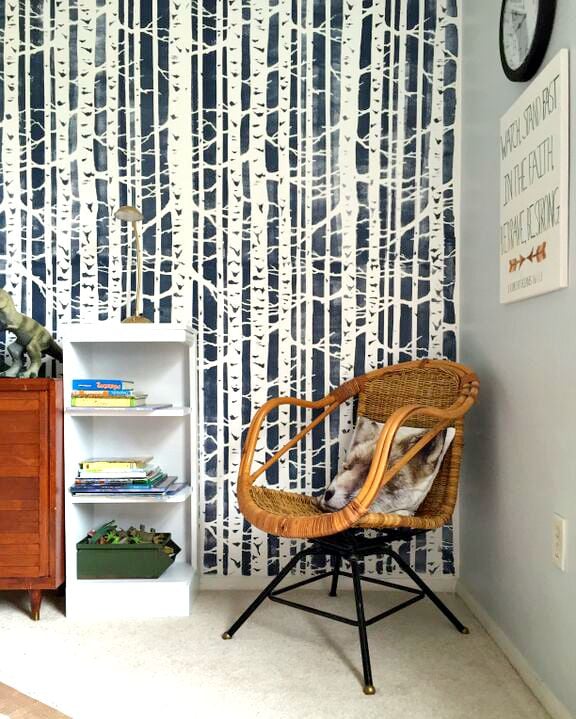
Image Source: StyleMutt
With a bucket of paint, you can do many a wonderful thing to a wall. You can also do many a horrible thing. Stencils, brushes, and the like have their place, but be careful not to gild the lily. In other words, keep decorative paint elements simple. That mural or stenciled design should enhance the room, not dominate it. And leave the sponge painting in the ’80s. Period.
6. Don’t Hang Onto Pieces That No Longer Serve You
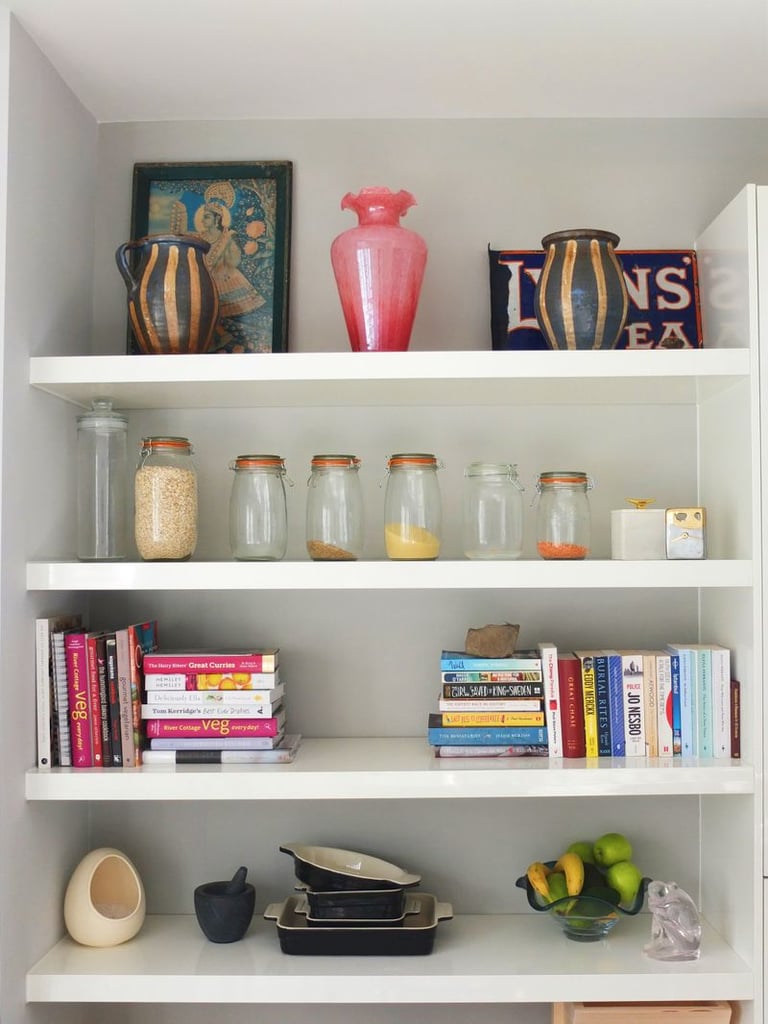 Image Source: A Beautiful Mess
Image Source: A Beautiful Mess
It can be hard to get rid of belongings that have sentimental value or that you shelled out big bucks for, even if they’ve outgrown their purpose. If you don’t, however, they’ll begin to overwhelm your home until its more cluttered than cute. Be honest with yourself and sort out the pieces you can really use, and get rid of the rest.
7. Don’t Push Furniture Against the Walls
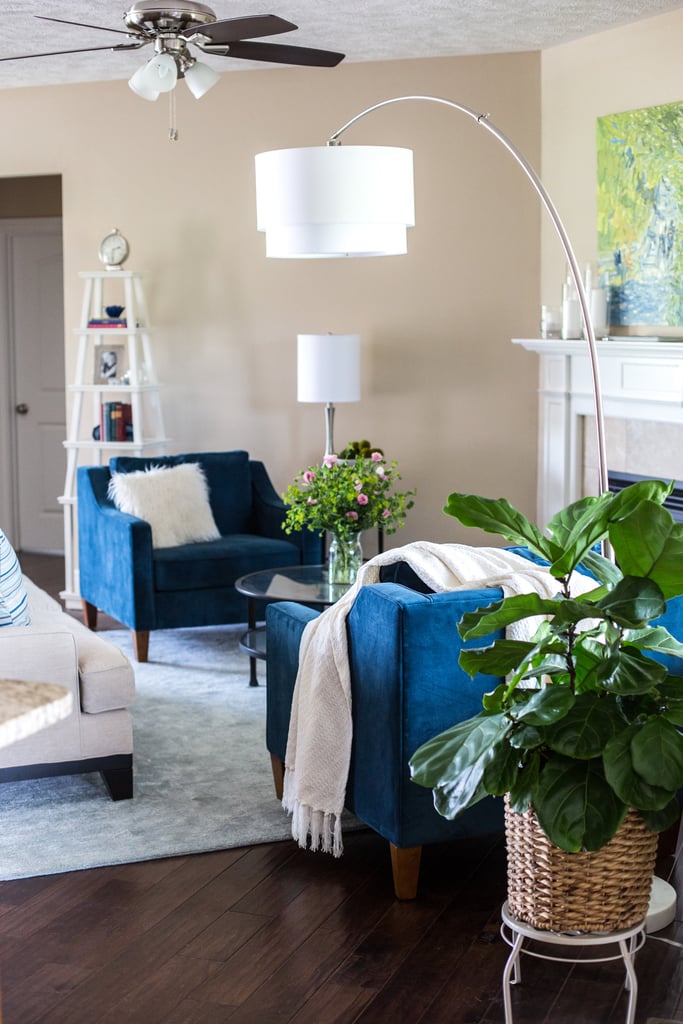 Image Source: The Decor Fix
Image Source: The Decor Fix
Pro designers cringe when they see living room furniture pushed flush against a wall. Not only does it create awkward, empty space in the middle of the room, but it creates a formal, unwelcoming vibe. Make better use of the the space and warm up the room’s vibe by arranging furniture within the room instead of against it. Trust us, no one will mind seeing the back of your sofa.
8. Don’t Ignore Practical Needs
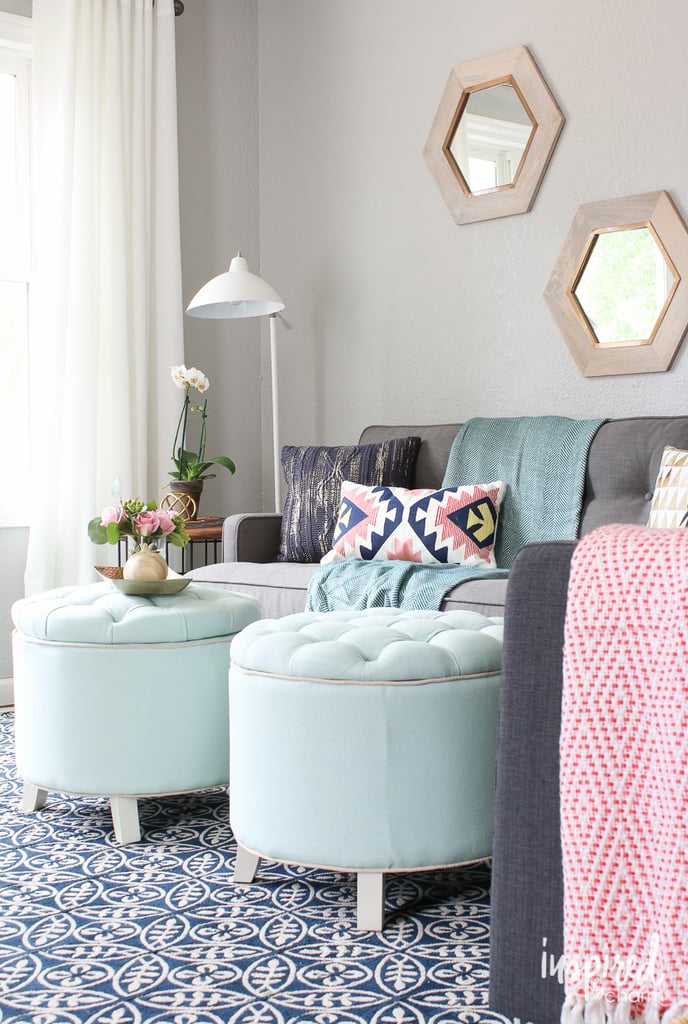 Image Source: Inspired by Charm
Image Source: Inspired by Charm
Get realistic about your family’s needs and budget, and design accordingly. While you may be lusting after the glam mirrored Hollywood regency coffee table, your young children mean you must forgo it for a soft, upholstered ottoman. Blowing your room budget on a single item is equally as devastating to your design. A truly great space is one that functions well for you.
9. Don’t Design Without a Plan
 Image Source: Sarah Hearts
Image Source: Sarah Hearts
Every space has its own distinct style and purpose, and it’s important to figure out what that is before you begin to decorate. Even eclectic-style rooms have a cohesive design theme that holds them together. Without any overarching purpose or theme, a room quickly becomes chaotic and adrift. You don’t need to know exactly where each piece of decor will go, but you should have a general idea of what you want.
Comments (0)
08 February 2018
By portermathewsblog
via popsugar.com.au
 Image Source: Armelle Habib
Image Source: Armelle Habib
When it comes to the upsides of green thumbs, many of us are well-versed. Plants can be air-purifying, calming, insect-repelling, sleep-inducing, or lighten up a space. Bringing parts of the outdoors in though, can often present challenges — where are the plants going to go? Will they suit the room? What if I’m already short on space? What about the temperature?
To save you spiralling into an endless Google search for answers, we’re breaking down the best indoor plants for every room, right here. With some handy styling tips, too, so now, there’s really no excuse not to go green.
This is an edited extract from Plant Society by Jason Chongue, published by Hardie Grant Books ($29.99) and available in stores nationally.
Living Room
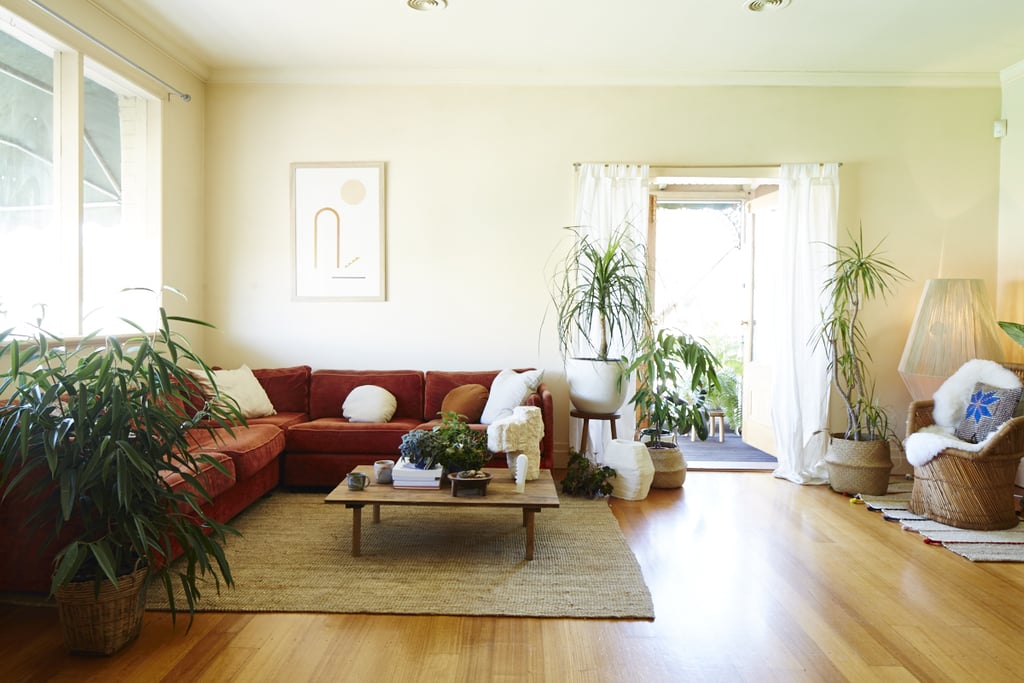 Image Source: Armelle Habib
Image Source: Armelle Habib
The living room is the perfect place to go wild and use multiple plant types when styling. Use plants both individually and in groupings to get different effects. Tall, tree-like plants, like the rubber plant and dinner-plate ficus, are great specimen plants if you want to add drama into your room. You can also mix plain-leafed plants with more textured types.
Some good living room plants include:
- Bird of paradise (Strelitzia nicolai)
- Devil’s ivy (Epipremnum aureum)
- Dinner-plate ficus (Ficus dammaropsis)
- Fiddle-leaf fig (Ficus lyrata)
- Fruit salad plant (Monstera deliciosa)
- Medinilla magnifica
- Peace lily (Spathiphyllum)
- Philodendron
- Queen of hearts (Homalomena)
- Rubber plant (Ficus elastica)
- Umbrella plant (Schefflera)
Bedroom
 Image Source: Armelle Habib
Image Source: Armelle Habib
We spend a large portion of our lives in our bedroom, but it is often the last place we consider when introducing plants into our homes. Your bedside table is perfect for a compact plant that will help aerate the air while you sleep. Textural plants like devil’s ivy, philodendron and monstera make a nice addition to your bedroom and are a great thing to look at when you first wake up.
Some good bedroom plants include:
- Arrowhead plant (Syngonium)
- Begonia
- Devil’s ivy (Epipremnum aureum)
- Fruit salad plant (Monstera deliciosa)
- Peace lily (Spathiphyllum)
- Rubber plant (Ficus elastica)
- Wax plant (Hoya)
Dining Room
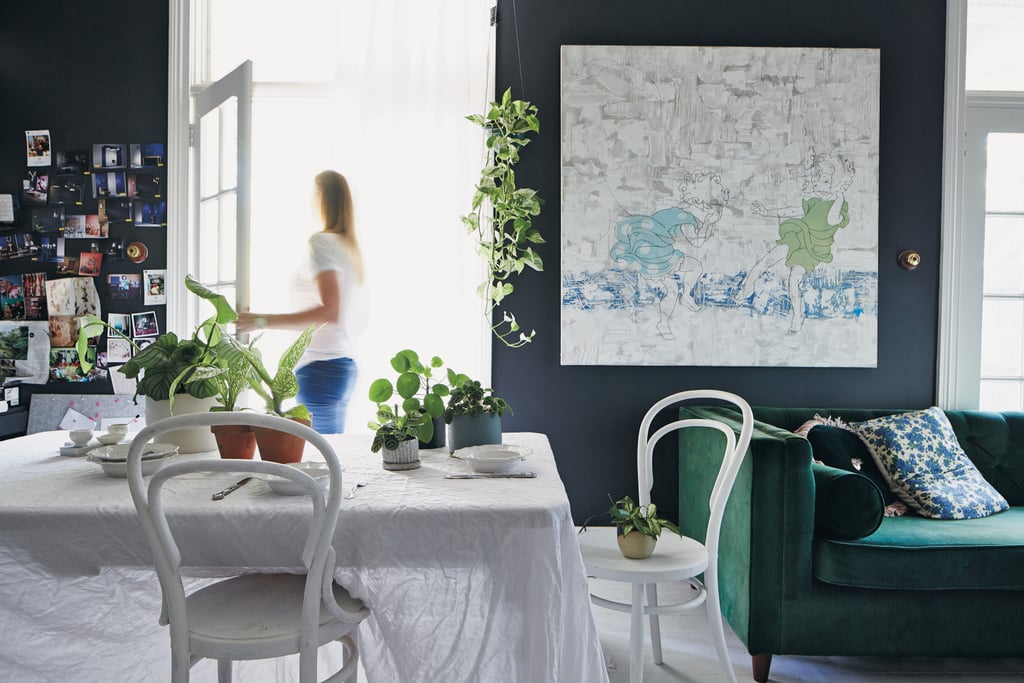 Image Source: Armelle Habib
Image Source: Armelle Habib
There is nothing more special than having guests sit around your dinner table when it’s adorned with some delicate plants. The best plants for your dining room are plants that will remain small and compact. There are several well suited species with a range of colours and forms.
Some good dining room plants include:
- Begonia
- Chinese money plant (Pilea peperomioides)
- Peacock plant (Calathea)
- Prayer plant (Maranta leuconeura)
- Queen of hearts (Homalomena)
- Radiator plant (Peperomia)
- Wax plant (Hoya)
Bathroom
 Image Source: Armelle Habib
Image Source: Armelle Habib
The bathroom is the perfect location for growing plants that love humidity. If you’re short on space, try hanging devil’s ivy or pitcher plants from shelves or the ceiling. Plants like peace lilies, queen of hearts and arrowhead plant are great for creating small groupings of plants placed next to your shower or beside your vanity.
Some good bathroom plants include:
- Arrowhead plant (Syngonium)
- Devil’s ivy (Epipremnumaureum)
- Peace lily (Spathihyllum)
- Pitcher plant (Nepenthes)
- Queen of hearts (Homalomena)
- Tassel fern (Huperzia)
- Zebra plant (Aphelandra)
Office / Desk
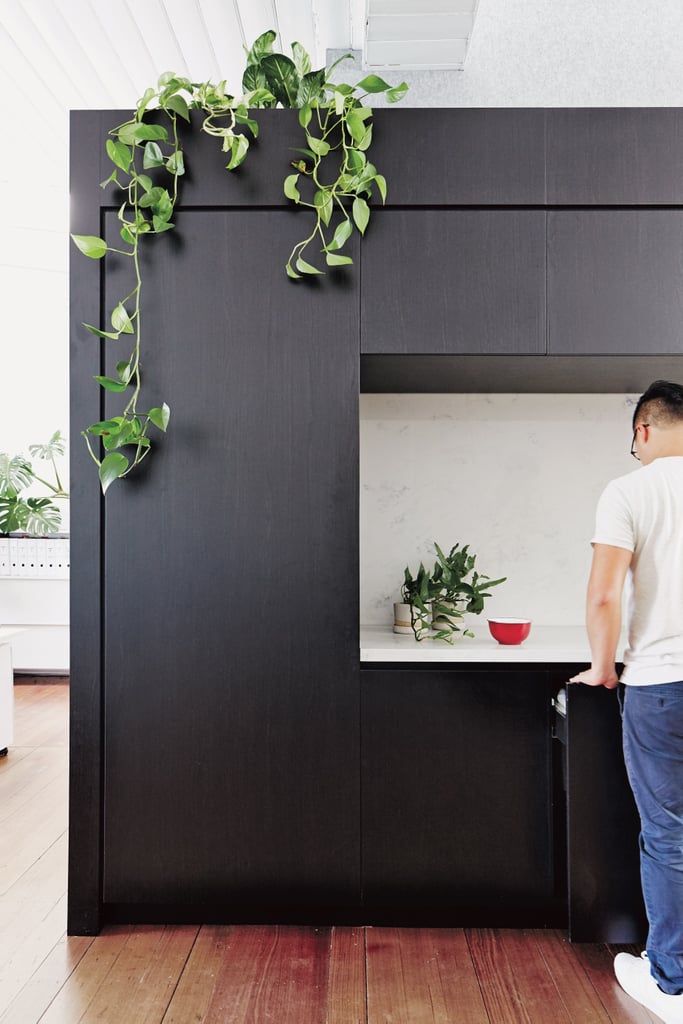 Image Source: Armelle Habib
Image Source: Armelle Habib
Compact plants are perfect for decorating your desk at home or at the office. There is often limited natural light at work and air circulation is poor. Try using some hardier table plants such as the Zanzibar gem, cast-iron plant or peace lily.
Some good office plants include:
- Cast-iron plant (Aspidistra elatior)
- Fruit salad plant (Monstera deliciosa)
- Peace lily (Spathihyllum)
- Zanzibar gem (Zamioculcas).
Meeting, Hallway and Reception Areas
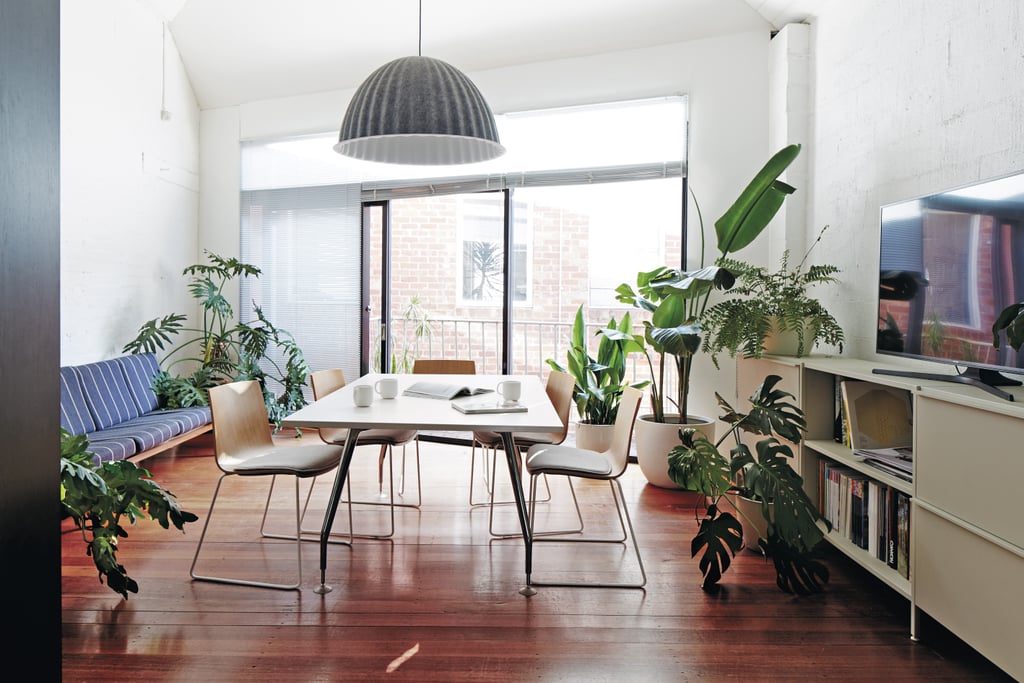 Image Source: Armelle Habib
Image Source: Armelle Habib
Plants make for a nice welcome when placed in hallways in your home and in reception spaces. They are comforting and create a calming first impression. These spaces are often used heavily and have limited natural lighting so try using plants like the cast-iron plant, rubber plant or umbrella tree.
Some good hallway or meeting room plants include:
- Bird of paradise (Strelitzia nicolai)
- Cast-iron plant (Aspidistra elatior)
- Dumb cane (Dieffenbachia)
- Lady palm (Rhapis)
- Rubber plant (Ficus elastica)
Comments (0)
05 September 2017
By portermathewsblog
Being the sun-favoured country we are, it’s Spring rather than Summer that blesses us with the biggest shift in weather and style. And oh boy, are we ready for a style shake-up — maybe it’s all
The Block we’ve been watching.We’re feeling black rather than white to pair with the strong olives greens and blues that started popping up in stores last month, and those velvety finishings are looking
fine with bamboos and linen. This is also prime time to start investing in objets d’art (French for arty objects). No matter what your budget, there’s a gorgeous vase, tray, bottle or trinket with your name on it that will be the perfect finishing touch to any room.
West Elm Carlo Mid-Century Chair, $899

Stockists: West Elm
Dinosaur Designs Art Sand Medium Vase, $195

Ikea Stockholm 2017 Cabinet, $499
Zara Home Multi-Coloured Paisley Print Linen Curtain, $139

Bed Thread Charcoal 100% Flax Linen Bedding Set, From $230

Urban Outfitters No Bad Days Woven Throw Blanket, $124.31
Stockists: Urban Outfitters
Zara Home Irregular Decorative Bone Tray, $39.95
Stockists: Zara Home
H&M Textured-Weave Cushion Cover, $39.99
Freedom Nook Console Table, $799

Country Road Malvi Tea Towel Pack, $ 34.95
Cotton On Home Kapel Print, $59.40
Kip & Co. Electric Blue Velvet Beanbag, $129
Maison Balzac 2067AD, $69
West Elm Linden Mid-Century Wide Shelf Unit, $1,099
Comments (0)
31 August 2017
By portermathewsblog

Many a pet parent out there can point to their furry friend and say, “This is why we can’t have nice things.” Living with animals in a Pinterest-worthy home is a hard thing to pull off, but not impossible.
We chatted to two interiors experts who share their tips for creating pet-friendly and polished interiors.
- Be positive: “Focus on the cuddles and devotion, not the hair/droppings/puddles/inevitable round-the-clock wake-up calls. Cuddles, kisses and those eyes you get when you’ve been out all day are worth any amount of vacuuming!” says stylist and writer, Heather Nette King. And she should know, her housemates are Dougal the golden retriever, and Sugar, her cat.
- Make it easy for yourself: “Invest in a vacuum with a pet hair attachment — particularly if you have a deep-pile rug or carpet. Having said that, I’ve already blown one up, but I bought quality the next time and now all those little blonde ‘puppies’ as I like to call Dougal’s coat sheddings, are easily vanquished!” says Heather.
- Put in the effort: “Teach them early if there is a no-go zone in your home. Doogs stands at our bedroom door and knows he can not place even a paw through the doorway. No matter how sad his eyes are! It’s my husband’s rule — he’s a bit allergic, and I get it, so create boundaries that please everyone, and your fur-babies will co-exist happily with you, hopefully for the longest, happiest time,” says Heather.
- Opt for leather: “You can’t be too precious about your home. It’s a living, breathing space that’s meant to be comfortable. As soon as you walk through that door at night and drop your bags — you want to relax, not be worrying about your pet climbing on furniture. I always recommend leather for pet-loving homes. It’s pretty simple to keep clean, it’s hard-wearing and I like to think any scratches or marks add to the patina of the leather — telling a story of your family,” says Jodi Hall, National Field Visual Manager at West Elm.
- Don’t hide it: “Sharing your home with a pet is a simple joy! Don’t try and hide their presence — choose a pet bed that you’re happy to show off. I always suggest a great floor cushion that goes with your decor, then you don’t have to hide it — who has time for that! And let’s be real, cats and dogs like clocking up sleep (living the dream!) so make it something you love,” says Jodi.
Comments (0)